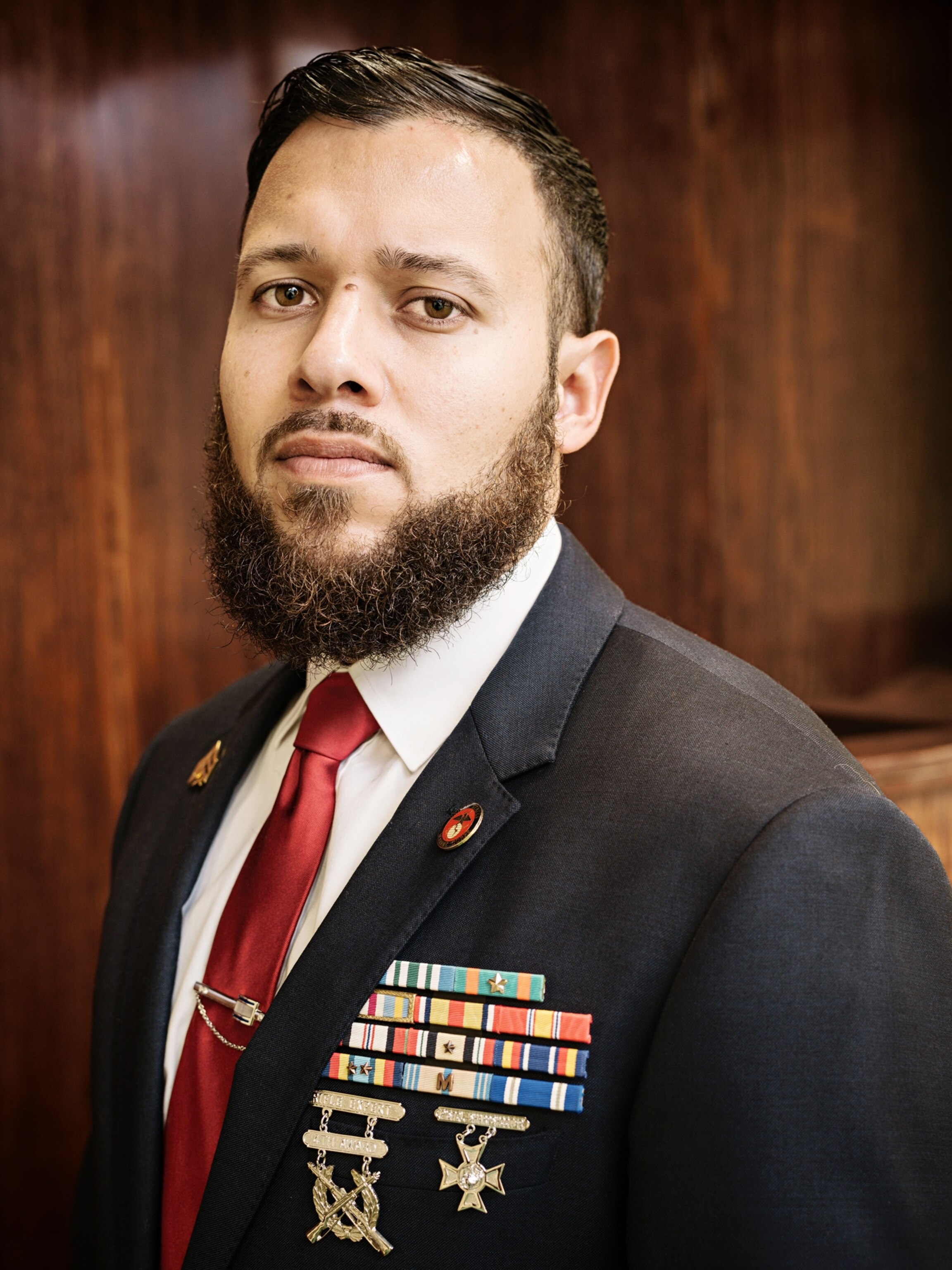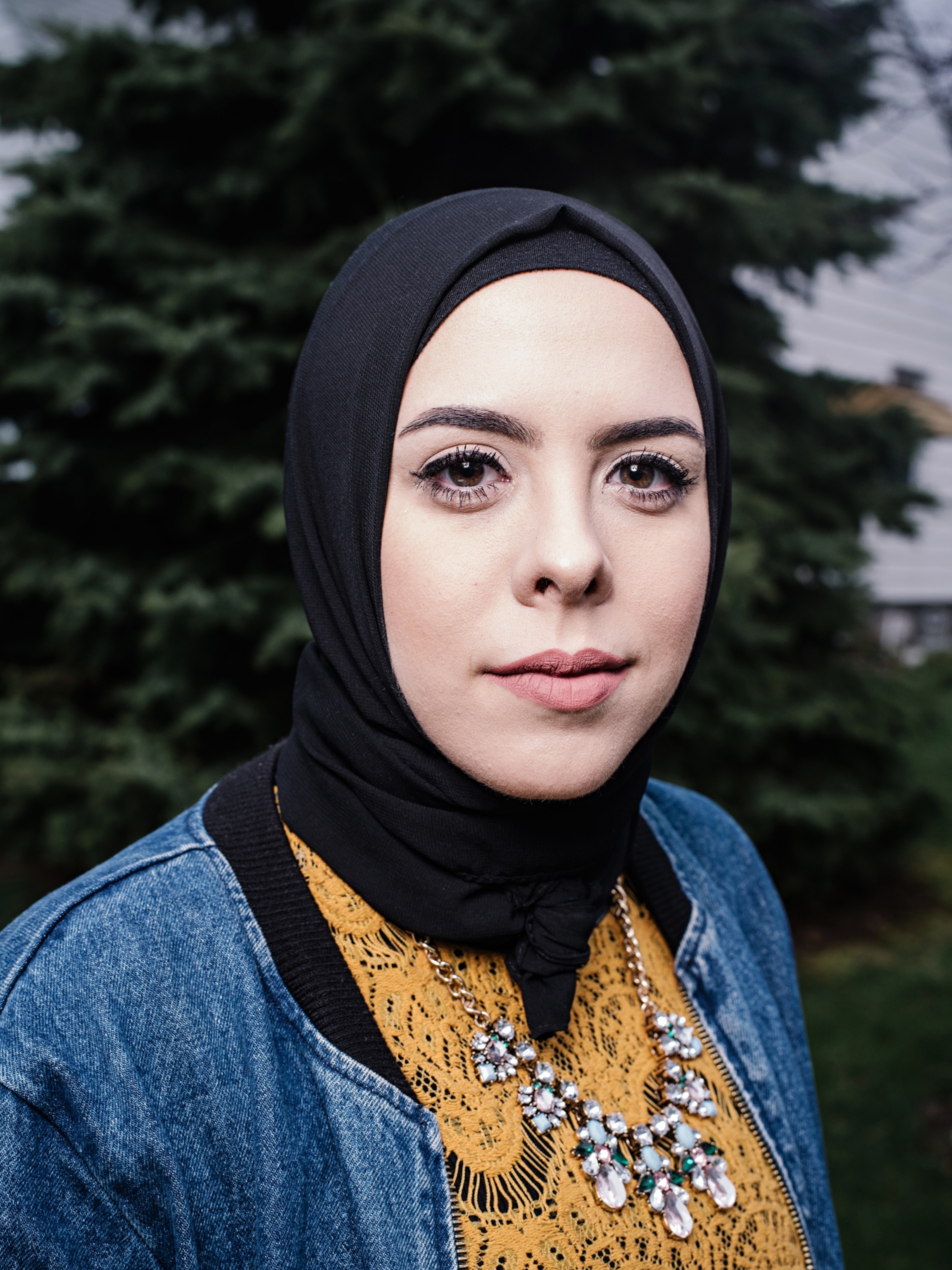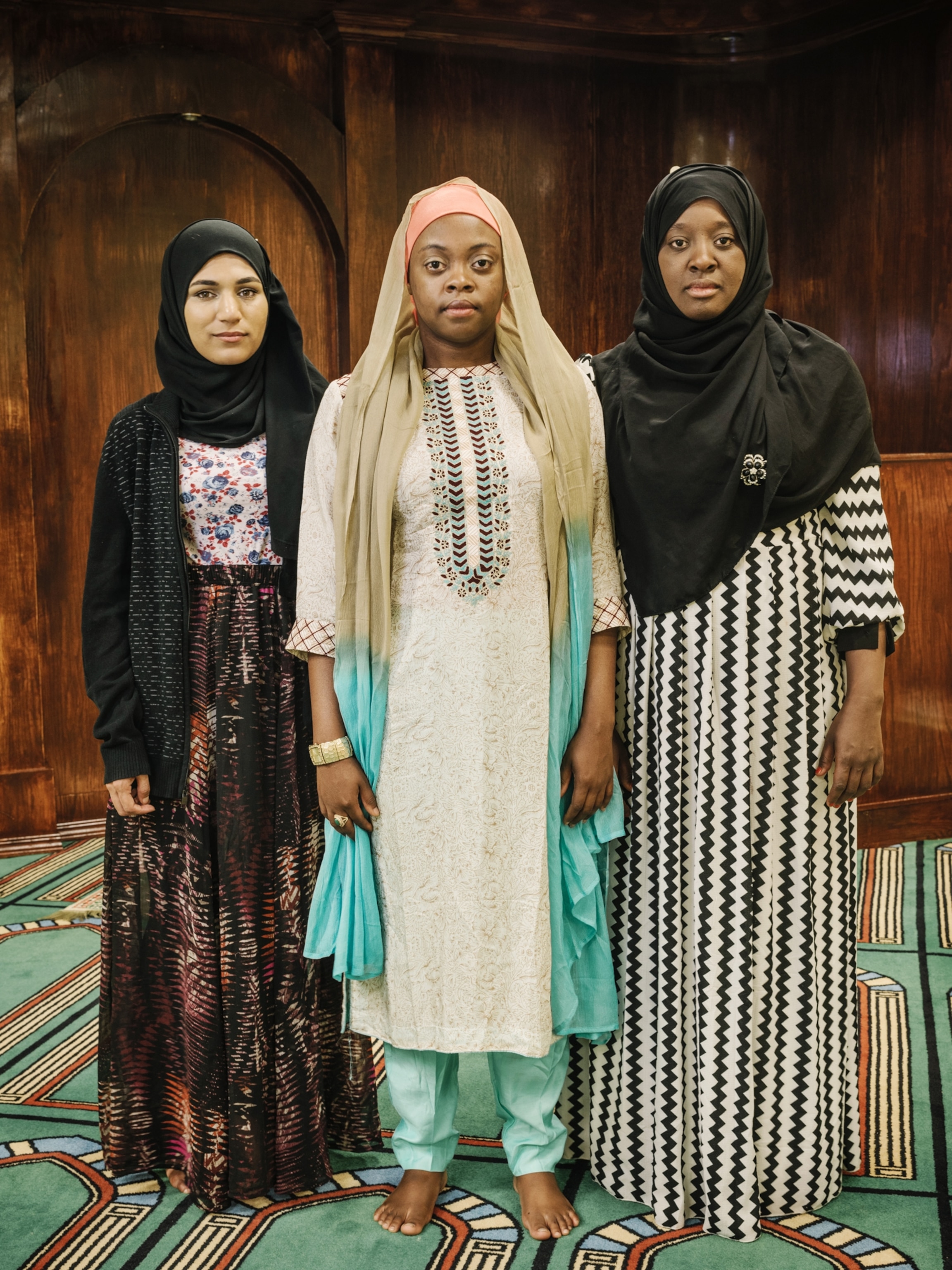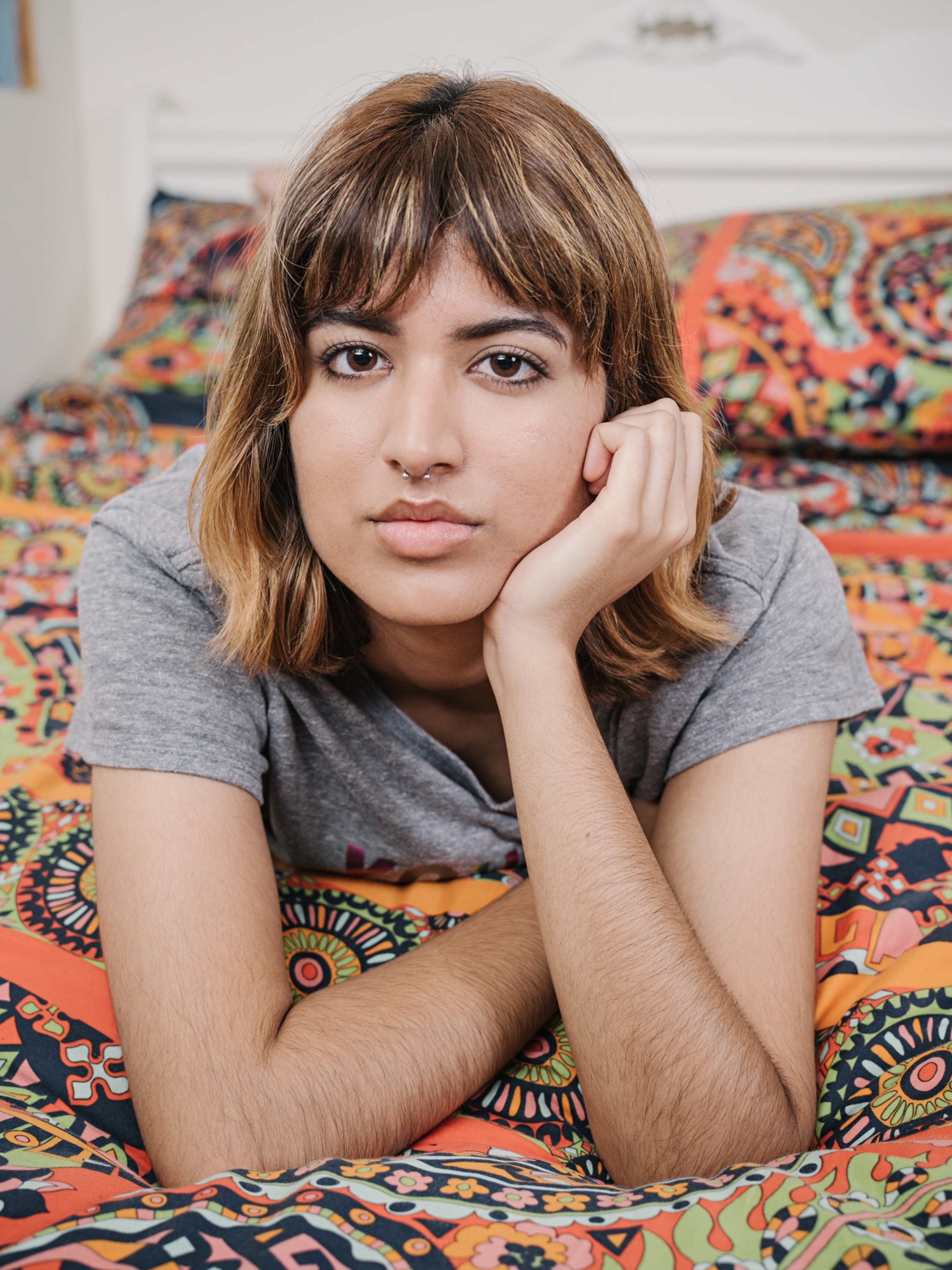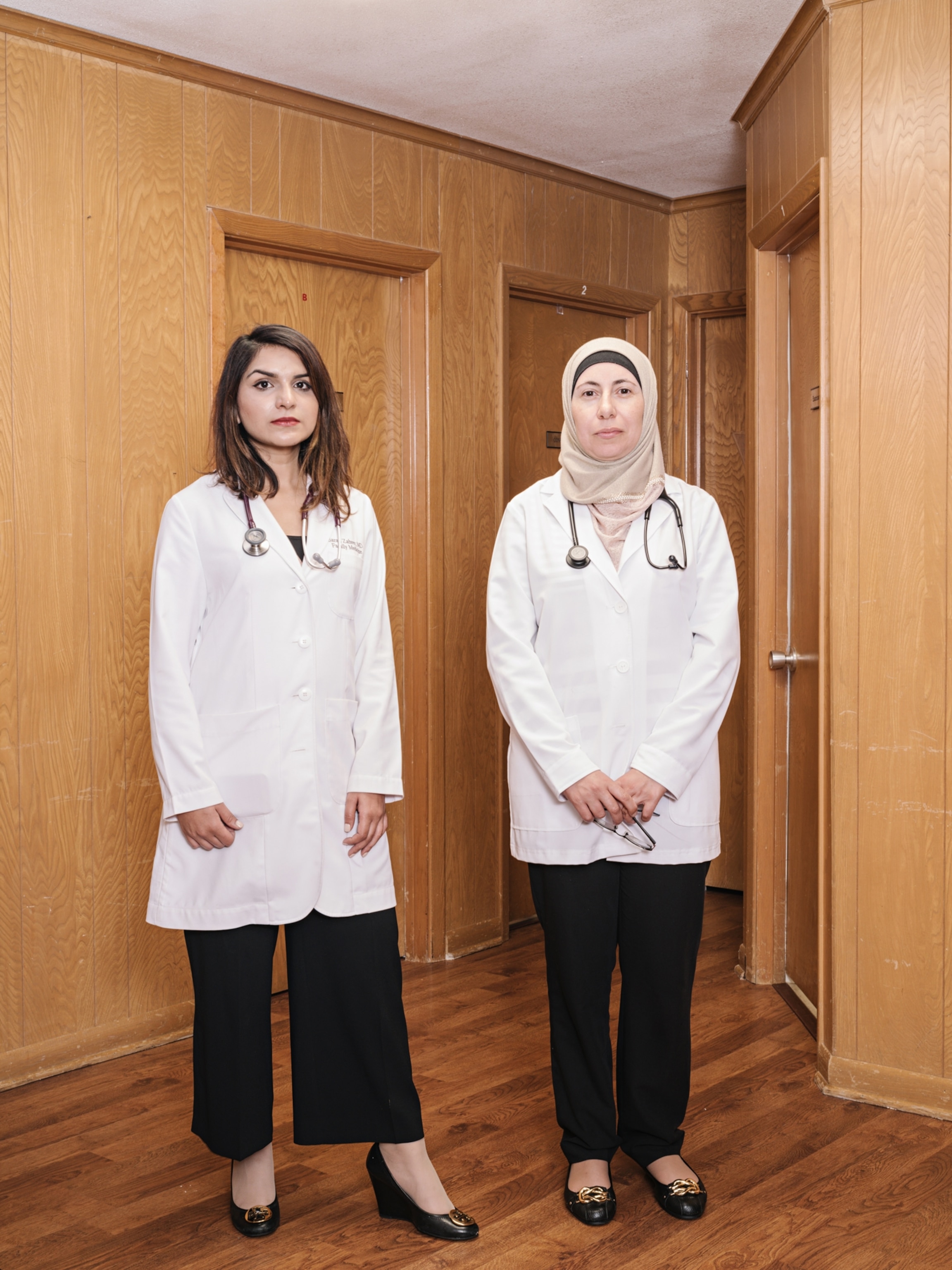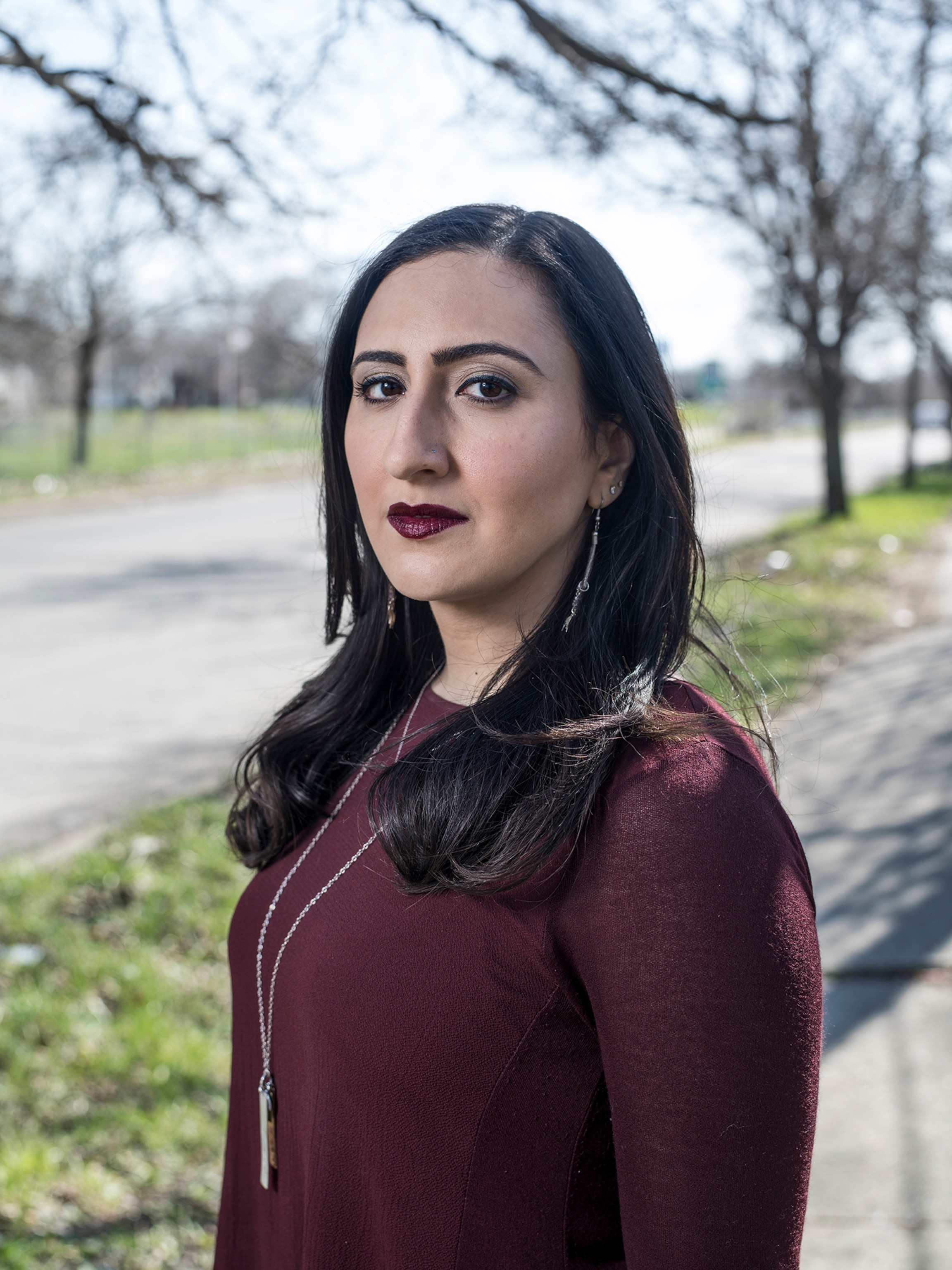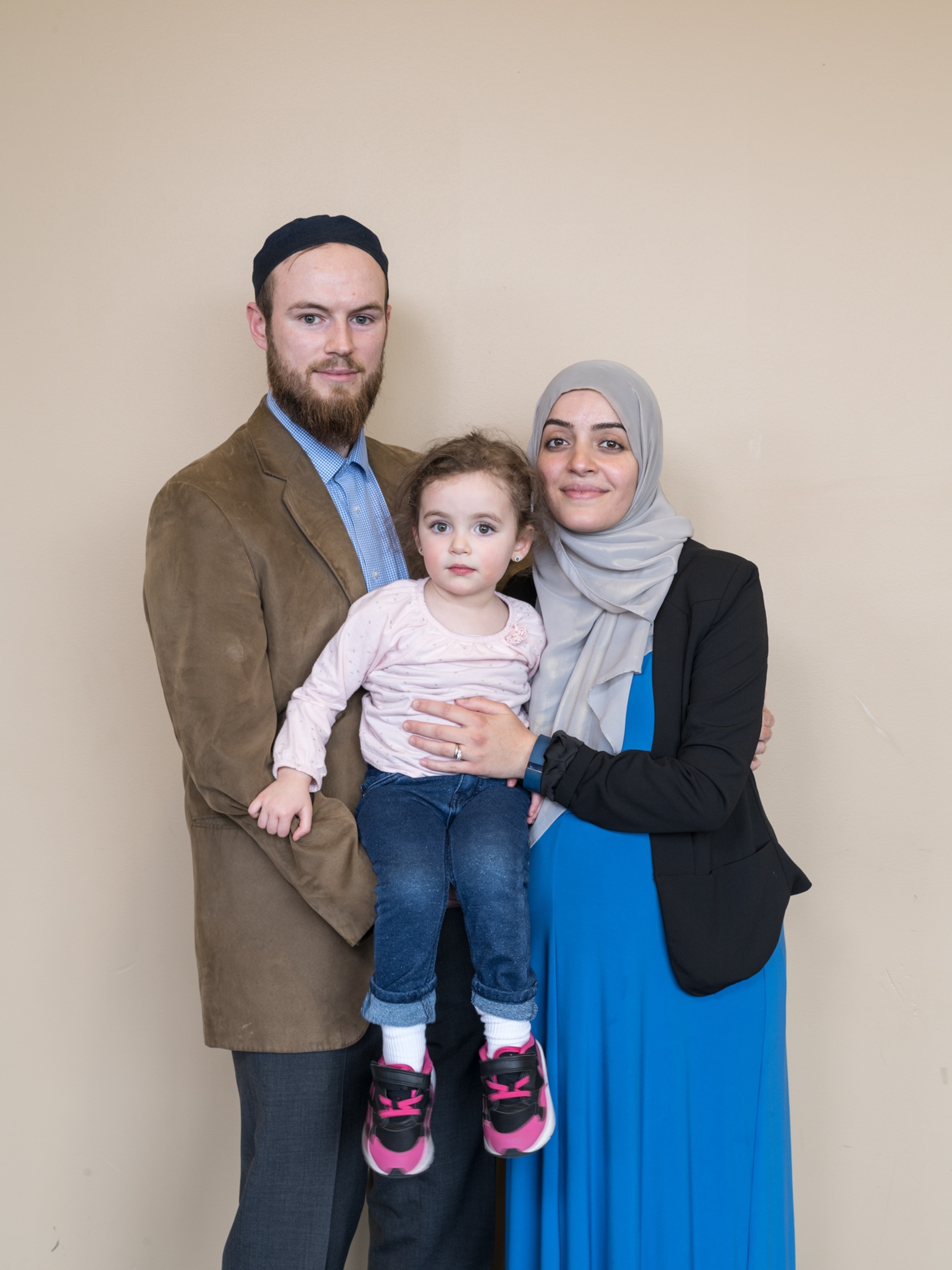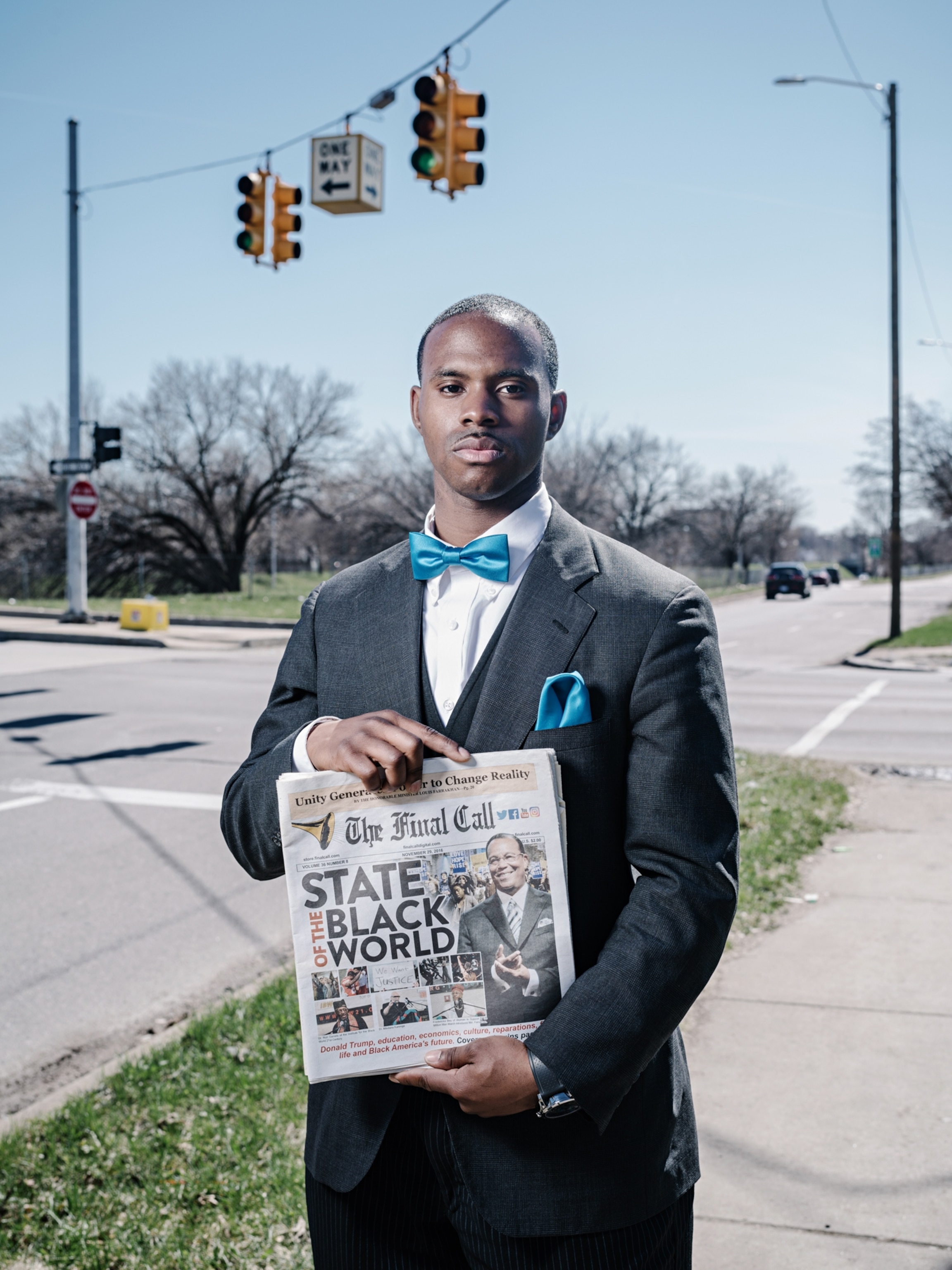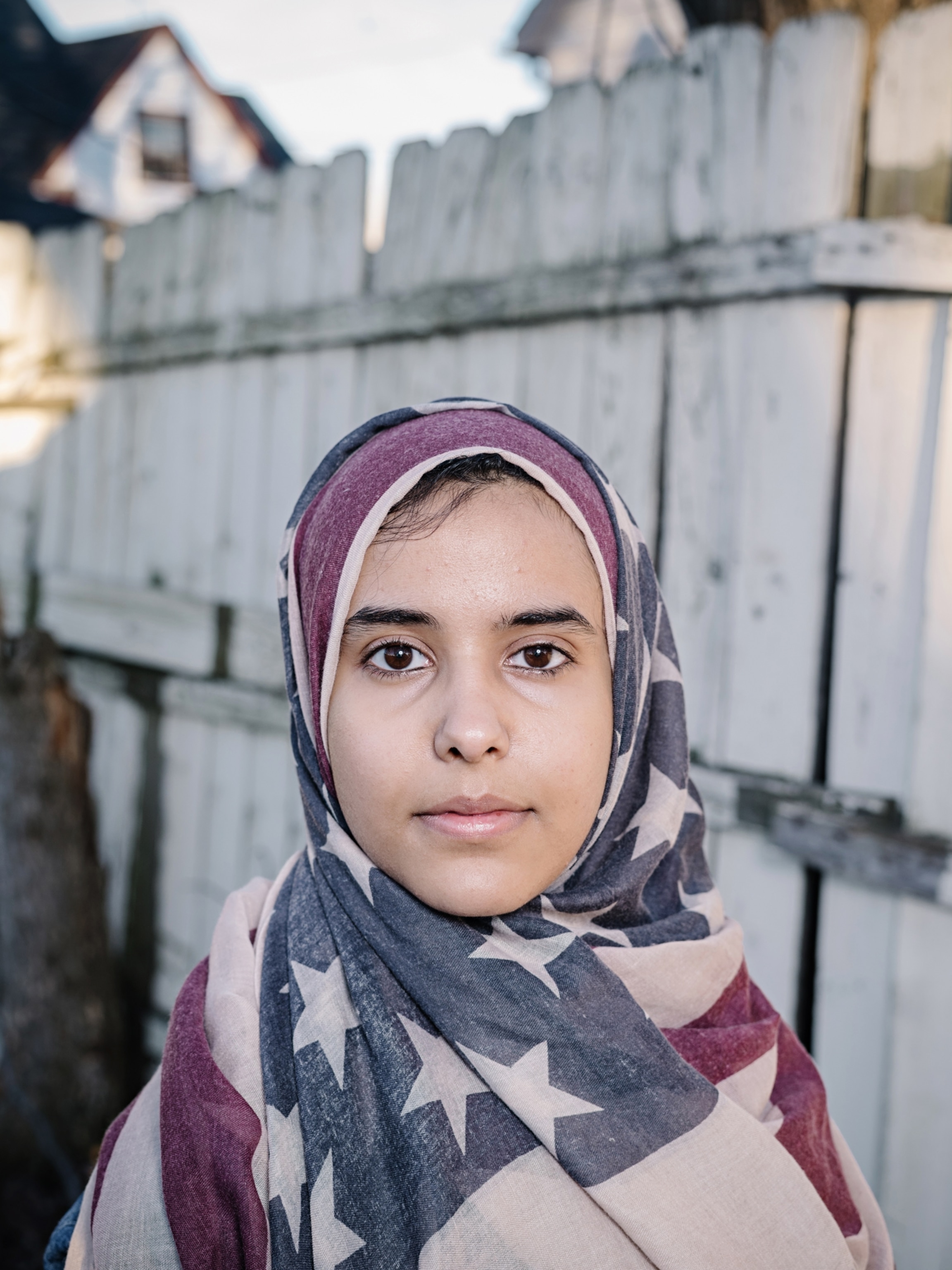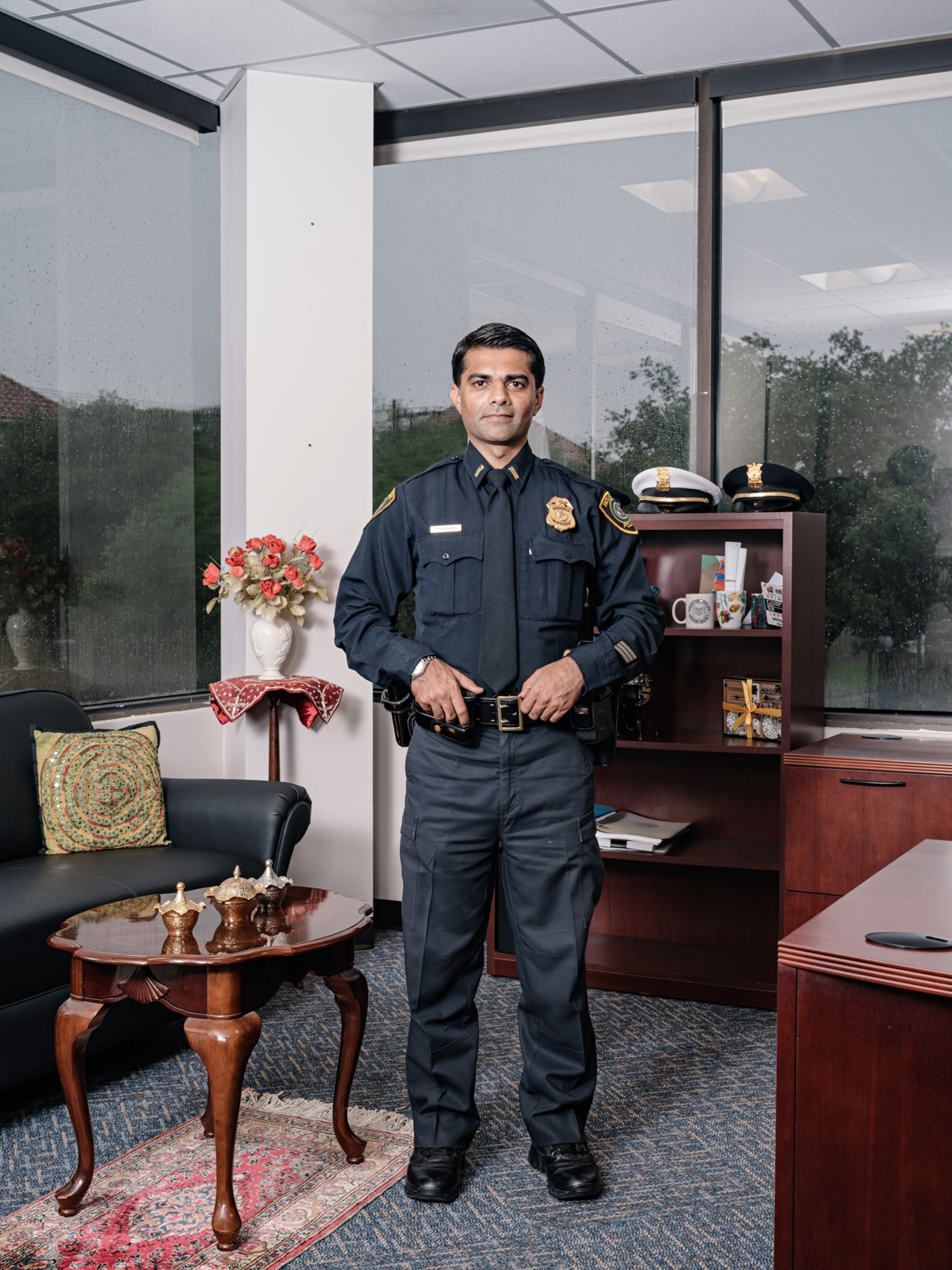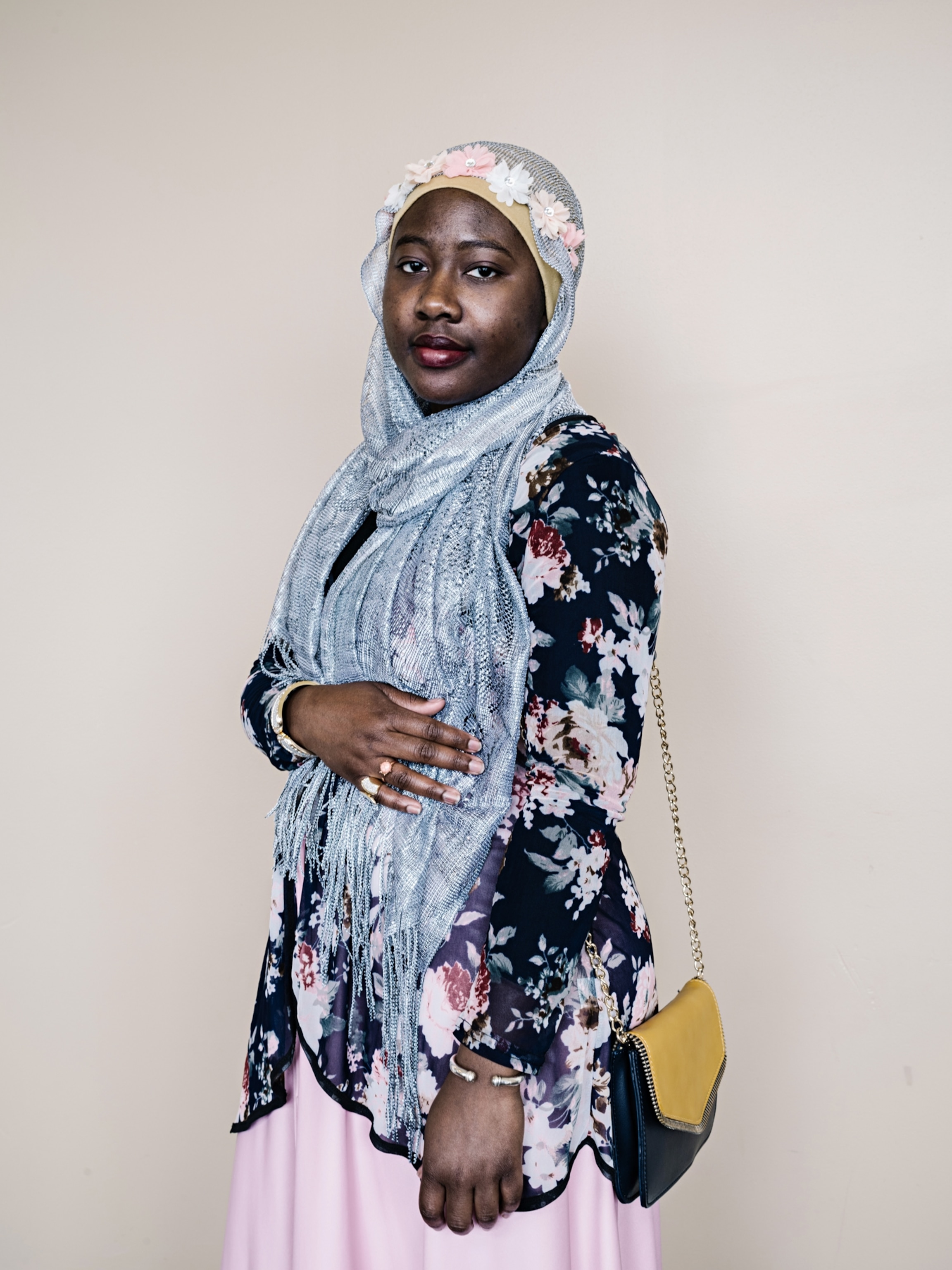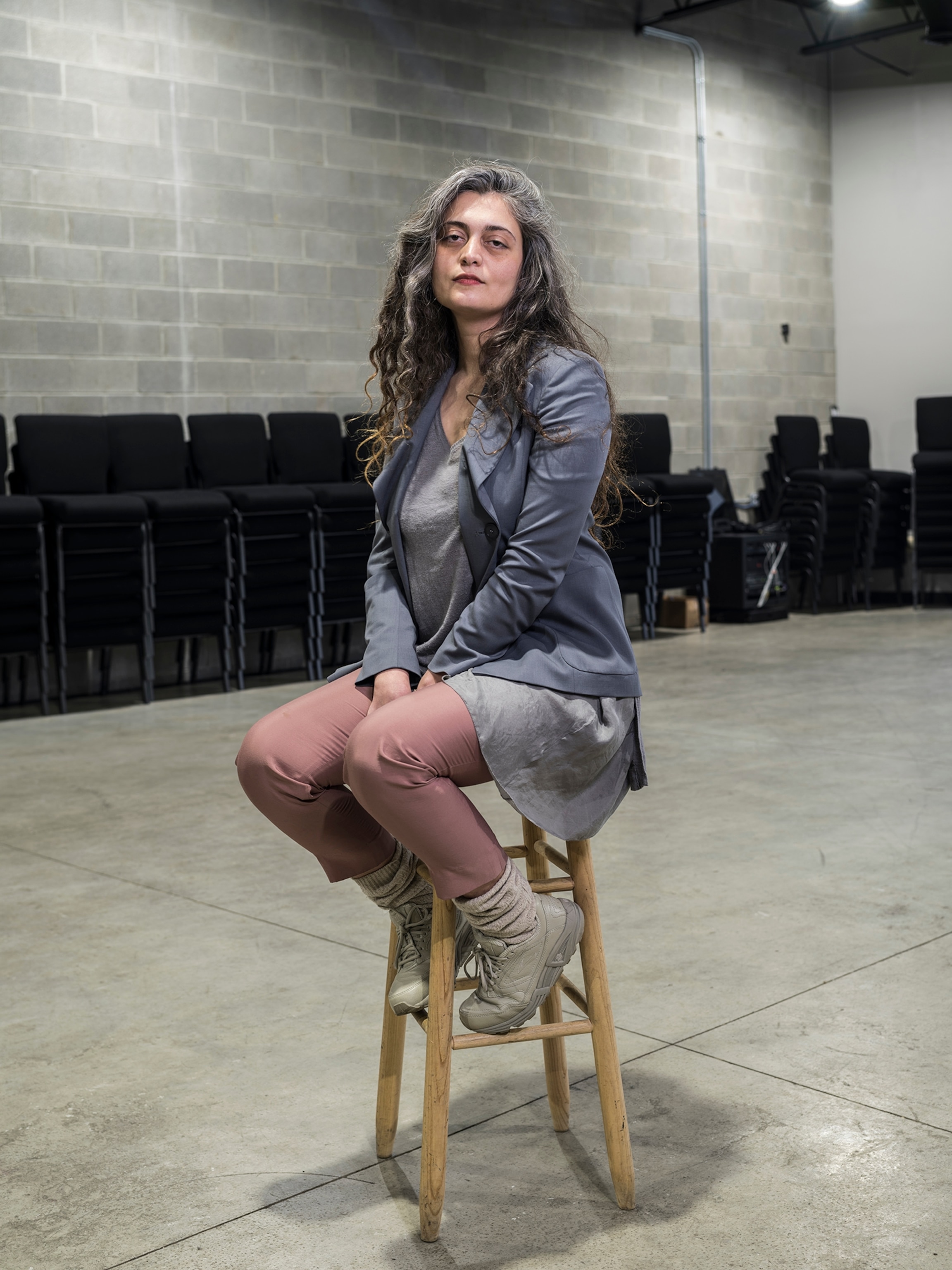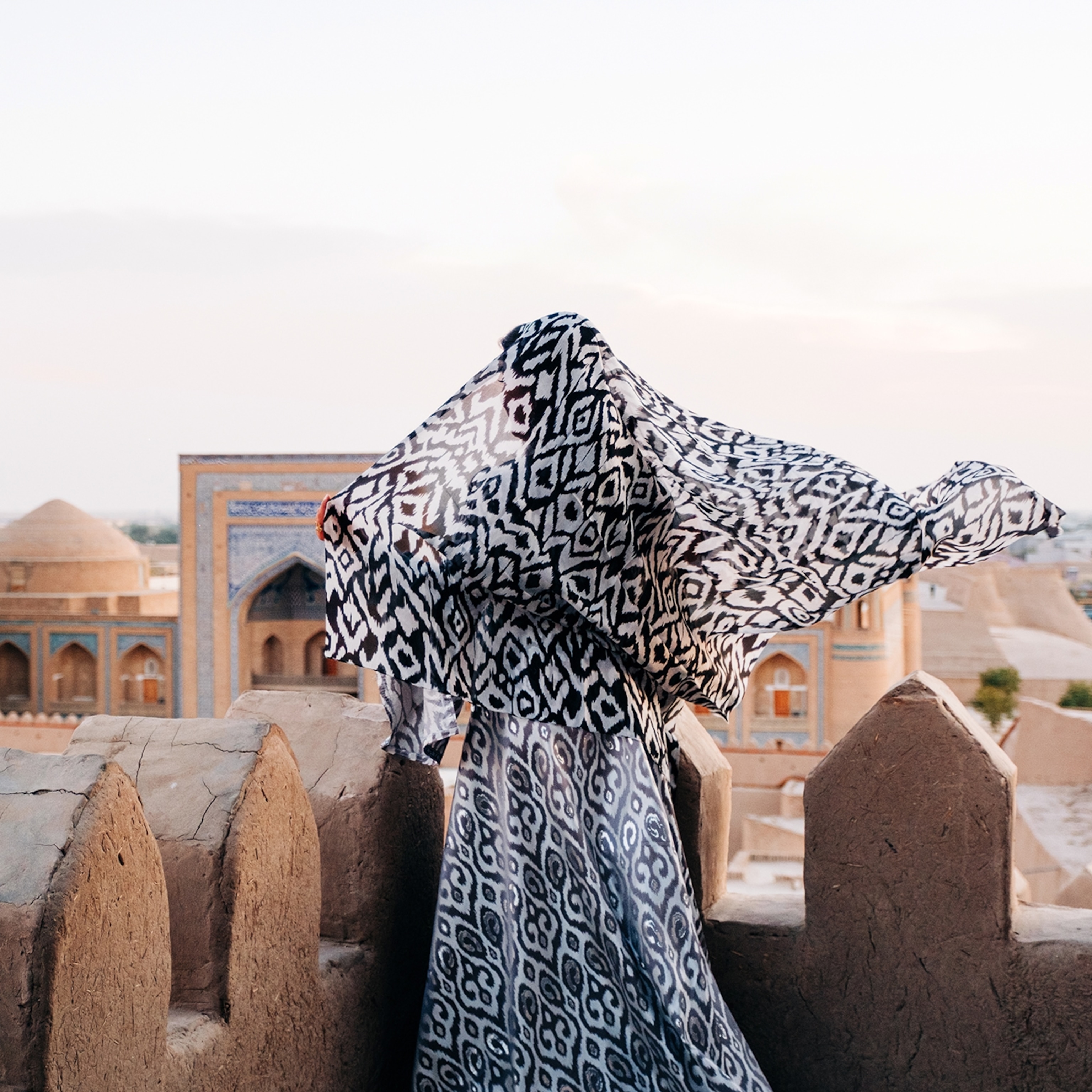
How Muslims, Often Misunderstood, Are Thriving in America
They’re a vibrant and increasingly visible part of the tapestry in communities across the nation.
This story is part of Diversity in America, a National Geographic series covering racial, ethnic, and religious groups and examining their changing roles in 21st-century life. Tell us your story with #IDefineMe.
There was nothing to do but watch as the copper-domed building in the southern Texas oil town of Victoria burned down.
The mosque where Abe Ajrami’s Beyoncé-loving daughter was feted with other high school graduates, the mosque where his children went to religion classes, the mosque where he and his family went every Friday to pray and mingle over a potluck of seven-layer dip and spiced biryani, was gone.
“I was trying not to break down,” says Ajrami, a Palestinian American who raced to the mosque after getting a phone call in the dead of night. He recounts the experience to me in his living room as his wife, Heidi, an American convert to Islam, sits to his right and his daughters, Hannah and Jenin, sit to his left, while his son, Rami, sleeps upstairs.
(Why Turkey Lifted Its Ban on the Islamic Headscarf)
This family reminds me of my own. My father, from Lebanon originally, also came to the United States for an education and a better future, as Ajrami did. My mother was a Unitarian Universalist, like Heidi, and she met her future husband in college and converted. My parents have raised five ambiguously tan American Muslim kids.

Born to a poor family in the Gaza Strip, Ajrami studied nursing because it was all he could afford. In 1994 a friend helped get him a visa and a scholarship to Clarkson College in Omaha, Nebraska. There he met Heidi, a Texas-born Army brat. He wooed her with picnics and jokes; she took him to his first football-watching party. They moved to Victoria when Heidi got a job there as a college English instructor. Ajrami became director of nursing at a hospital. He now runs a medical-staffing business, and the family lives in a large house with a pool. God is a big part of their lives, the way God is the center of most people’s lives in this town.
On the night the mosque was set on fire, January 28, 2017, Ajrami watched with others from this small Muslim community. They wept, hugged, and prayed. Only hours before, President Donald Trump, delivering on a campaign promise to stop Muslims from entering the United States, had issued an executive order aimed at barring anyone arriving from seven Muslim-majority countries.
The fire, allegedly set by an arsonist who has been charged with a hate crime, caused sections of the building to collapse. Only the copper domes and marble slabs carved with quotations from the Muslim holy book, the Quran, would survive. Ajrami took pictures and posted them online. “We will rebuild, with LOVE!” he captioned them. It went viral. Within days the mosque raised a million dollars. The town rallied to support them. And even today they still get checks in the mail.

In the ashes of his mosque, Ajrami clearly saw the task ahead. “I didn’t want that label, Muslim, to define me as a person. But because of the fire we really had to be on the front lines,” he says. Ajrami made himself available to the media and gave talks on his faith, becoming a spokesman despite his misgivings.
“You have to take deep breaths because at some point you do start to question yourself,” he says. “Why am I doing this? Why do I have to prove to you that I’m a good guy?”
Today an estimated 3.45 million Muslims in America are living in a climate of hostility, their faith distorted by violent extremists on one end and an anti-Muslim movement on the other. The rise in animosity was stoked by fiery anti-Muslim rhetoric from conservative commentators and politicians, including the president. Trump repeatedly has described Islam as a threat, retweeting anti-Muslim videos from a British hate group and keeping his distance from the religion, like when he decided the White House, for the first time in more than two decades, would not host a dinner to mark Ramadan.
Ajrami’s mosque was one of more than 100 targeted last year with threats, vandalism, or arson across the country, according to the Council on American-Islamic Relations. Hate crimes are up. In 2016 the FBI documented a 19 percent increase in incidents against Muslims over the previous year. Muslim children report being bullied more than kids from other faiths, according to the Institute for Social Policy and Understanding, which studies Muslims in America. Half of American Muslims say that being Muslim has become more difficult in recent years, according to a Pew Research Center survey.
And yet Muslim communities in America are thriving. Modest clothes for women who cover their hair are being created by Muslims in the U.S. under labels like Haute Hijab and Austere Attire, and Macy’s is now selling fashion for Muslim women. Halal products, the Muslim equivalent of kosher, are available at Costco and Whole Foods. Mattel has even debuted a Muslim Barbie. The doll, complete with a head scarf, is modeled on Olympic fencer Ibtihaj Muhammad. There’s a Muslim liberal arts college in Berkeley, California, and a graduate school in Claremont, California. Community activism is thriving, and Muslim activists are forging alliances with other marginalized communities.

In reaction to feeling targeted, Muslims are getting political. Groups such as the Pluralism Project are supporting and training dozens of Muslim candidates in Maryland alone to run for office. A hijab-wearing Somali-American woman now sits in the House of Representatives in Minnesota; a Muslim man is running for governor of Michigan. There are two Muslims in Congress and more running in this year’s elections.
Relatively new immigrants and their children make up the largest portion of the faith’s adherents. Many prayer leaders across the country are foreign-born. But there’s also a growing number of Muslim leaders and scholars speaking in the language of a U.S.-raised generation of Muslims—black, white, brown—to translate a faith often seen as foreign into culturally relevant lingo. Almost half of Muslims in America were born here. The face of the faith in the United States is young; nearly half are millennials and came of age after the terrorist attacks of September 11, 2001.
One of the leaders who speaks to that generation is Usama Canon, a half-black, half-white preacher from California. He converted in 1996 and studied with Islamic scholars in the United States and abroad.
“One of the great scholars said that Islam was kind of like a pure and clear water that takes the color of whatever riverbed it flows over,” Canon says, talking to me after an all-night lecture at a mosque in Houston. “And so I’m hoping that Muslims in America can kind of color that bedrock in a beautiful way and can contribute to what is the American project in a way that when that water flows over it, it has a uniquely American and a distinctly American color and flavor but is authentic to itself as a faith tradition.”
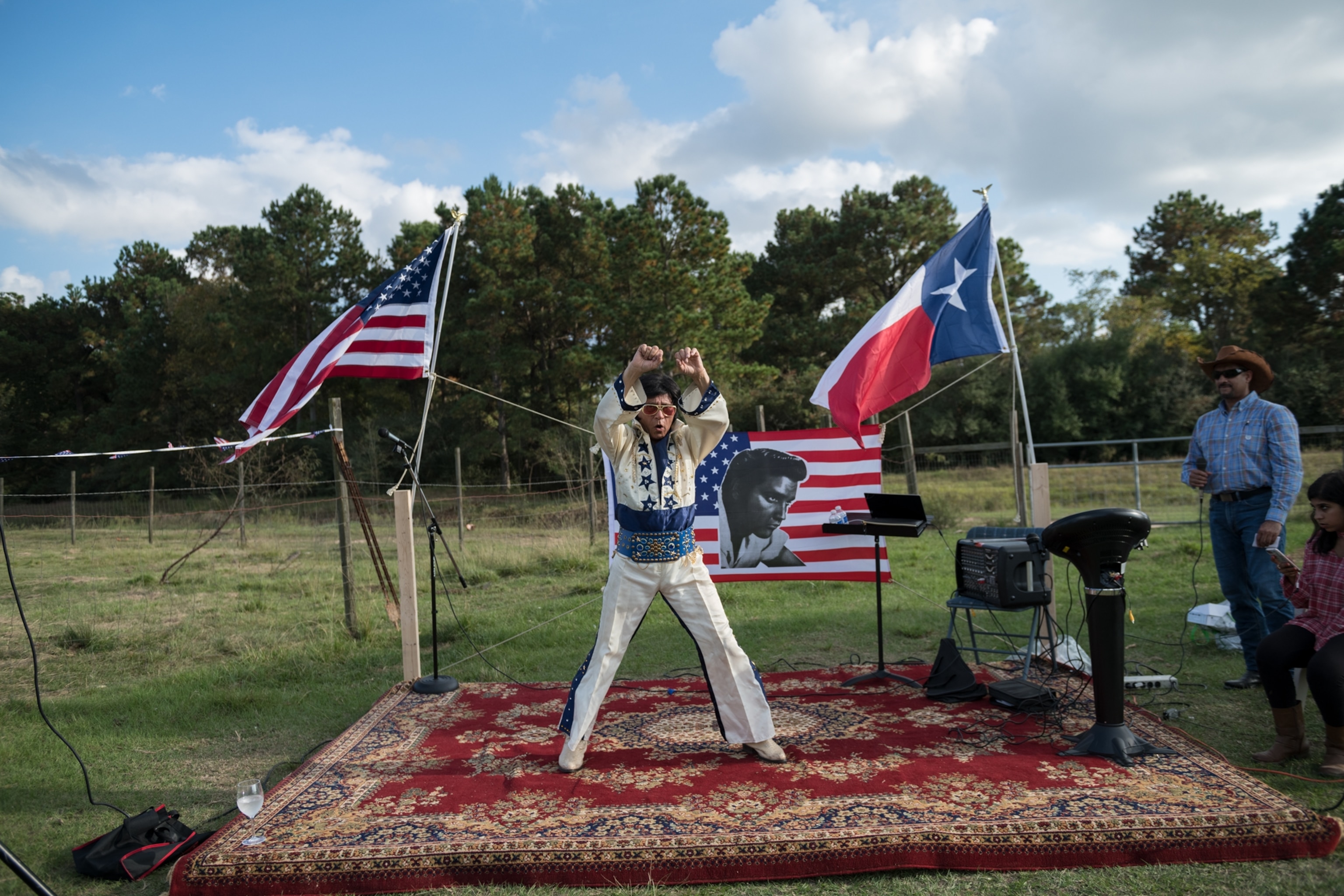

That color and flavor are coming from a mosaic of Muslim communities across the country like nothing I saw in over a decade of writing about the Muslim world. Islam is one of the most diverse faiths in the United States, with adherents from some 75 countries bringing distinct ways of worshipping. I visited Muslims in the South, West, Northeast, and Midwest. What I found was a variety of race, practice, class, culture, and language that I’d seen just once before—in Mecca, during the hajj, the pilgrimage that the roughly 1.8 billion Muslims around the world are obligated to make once in their lifetime.
My exploration of Islam in America led me to Sufi converts, mostly white, in rural Pennsylvania who meditate, praise God, and farm together at a spiritual retreat. In the ecolodge each room is named for an important word in Islam: Mercy, Courage, Praise, Love. It’s called the Farm of Peace, and it has a yogi, earthy vibe, so it’s not surprising that the imam, or prayer leader, does cupping therapy and acupuncture. He’s also the shepherd and the butcher on the 150-acre farm.

I met Bosnian Muslims in Chicago listening to a girls choir sing hymns praising the Prophet Muhammad. I went to the mosque my father attends, a largely South Asian Shiite congregation, next to a strip mall in a Chicago suburb. There’s a new digital lock on the door for an added layer of security. The imam urged congregants to vote, run for office, and get involved in community organizing and service. And I visited the mostly Arab Muslims in Dearborn, Michigan, where much of my father’s family lives. There people mix Arabic and English in local slang, signs are in both languages, and Middle Eastern cuisine is more common than pizza.
In Houston I spent time at the country’s first Spanish-language mosque, Centro Islamico. It opened its doors in 2016, and on the night I visited, more than a hundred people gathered to pray. Latinos are one of the fastest growing Muslim populations in the country. The mosque’s founder, Jaime “Mujahid” Fletcher, said Islam was his path to a better life after getting involved with gangs. He found the faith just before 9/11, so it was hard to explain his new religion to his Roman Catholic, Colombian family. There weren’t many Spanish books on Islam or Spanish-speaking scholars to dispel misconceptions. His mosque publishes those books now and webcasts sermons in Spanish, English, and Arabic.
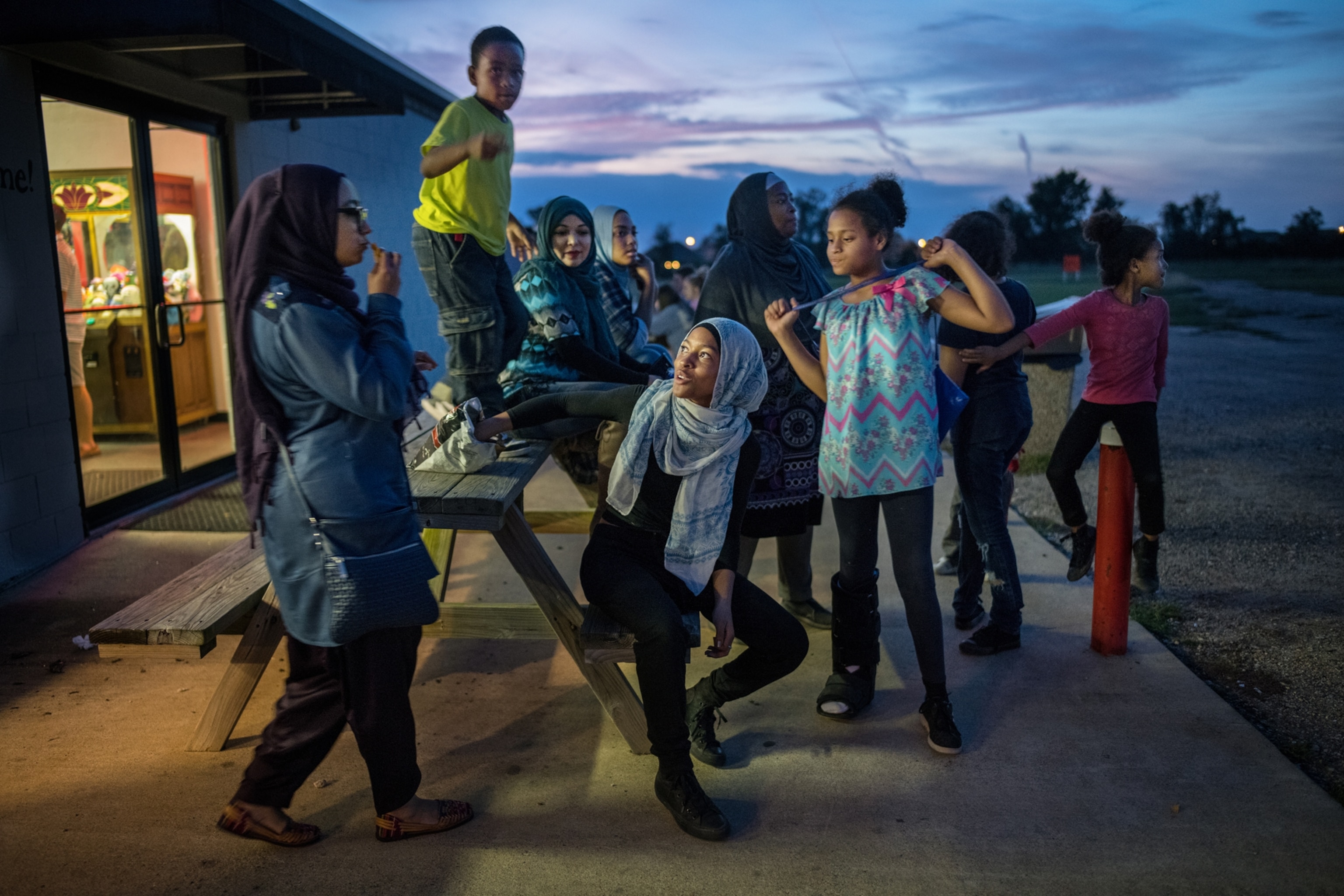
Any mapping of U.S. Muslims must include black American adherents, many of whom call themselves indigenous Muslims. They make up at least a fifth of the country’s Muslims. Islam is often referred to as hip-hop’s unofficial religion. Praises to Allah, the Arabic word for God, and other phrases, such as assalamu alaikum, or peace be upon you, are in the lyrics of celebrated artists from the Roots and Rakim to a Tribe Called Quest. New York City’s Harlem is still home to historic Black Muslim communities with signs in their restaurants that say, “No Pork on My Fork.” And in Philadelphia, Arabic words from the faith such as salaam (peace) and zakat (alms) are uttered by Muslims and non-Muslims alike. In South Los Angeles, Jihad Saafir, an imam and son of a Black Muslim cleric, turned his father’s storefront mosque into a vibrant community center and school that teaches the history of Islam through the lens of empowerment and African and African-American history.

It’s at Saafir’s mosque that Hamidah Ali sits next to me as we break our fast during Ramadan on halal Chinese food. I ask her what Islam in America is to her. She doesn’t hesitate. “Islam is cool,” the 27-year-old, African-American, second-generation Muslim says. Her hoop earrings peek out from her turban-wrapped head scarf, and she lists her idols, from hip-hop artists such as Yasiin Bey, formerly known as Mos Def, to America’s most famous Muslim, the late Muhammad Ali, who once said, “I am America. Only I’m the part you won’t recognize. But get used to me. Black, confident, cocky; my name, not yours; my religion, not yours; my goals my own—get used to me!” Ali was a controversial figure during his career—a conscientious objector to the Vietnam War, a proud Black Muslim popular among civil rights activists—but his pursuit of social justice later made him a cultural icon. His Muslim funeral in 2016 was broadcast on every major U.S. network. There’s even a book on the topic—Muslim Cool, by anthropologist Su’ad Abdul Khabeer. She writes on the Muslim identity formed at the intersection of black culture, hip-hop, and Islam.
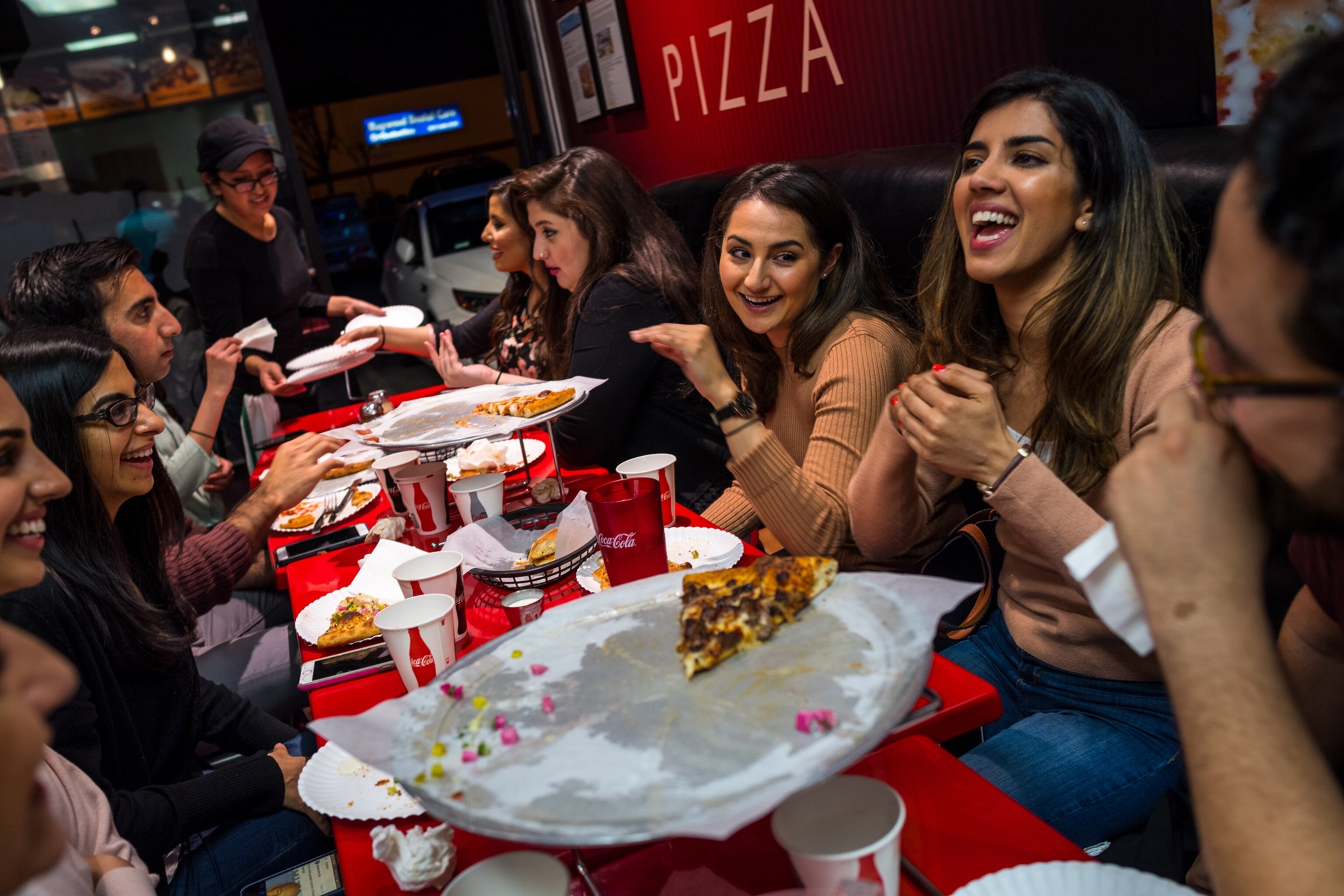
All of this is Islam in America. Canon, the preacher from California, says it’s one of the only places where pluralism openly flourishes, because Americans have the freedom to practice the religion in all its forms. As he talks to hundreds of mostly millennials in a Houston suburb at the Maryam Islamic Center—named for the Virgin Mary, the only woman mentioned by name in the Quran—he seamlessly switches from slang to jokes to quotes from the Quran. They ask him about how to handle customs that irk them: women being judged for wearing makeup in the prayer hall or immigrant parents who expect you to marry within the same culture. His answers come in candid stories that mix personal experiences with Islamic teachings about mercy, love, and respect.

It’s the cornerstone of his organization, the Ta’leef Collective. With campuses in Fremont, California, and Chicago, Canon has tried to create a welcoming space that largely caters to younger Muslims and converts.
For American-born Muslims the mosque can sometimes feel like a foreign place, a mash-up of immigrants from many countries bringing different cultural references. And Islam, like all religions in America, is struggling to keep young people in the fold. “The aim was to create an environment with unreserved welcome that people can come to at their own pace,” Canon says, “and on frankly their own terms.”
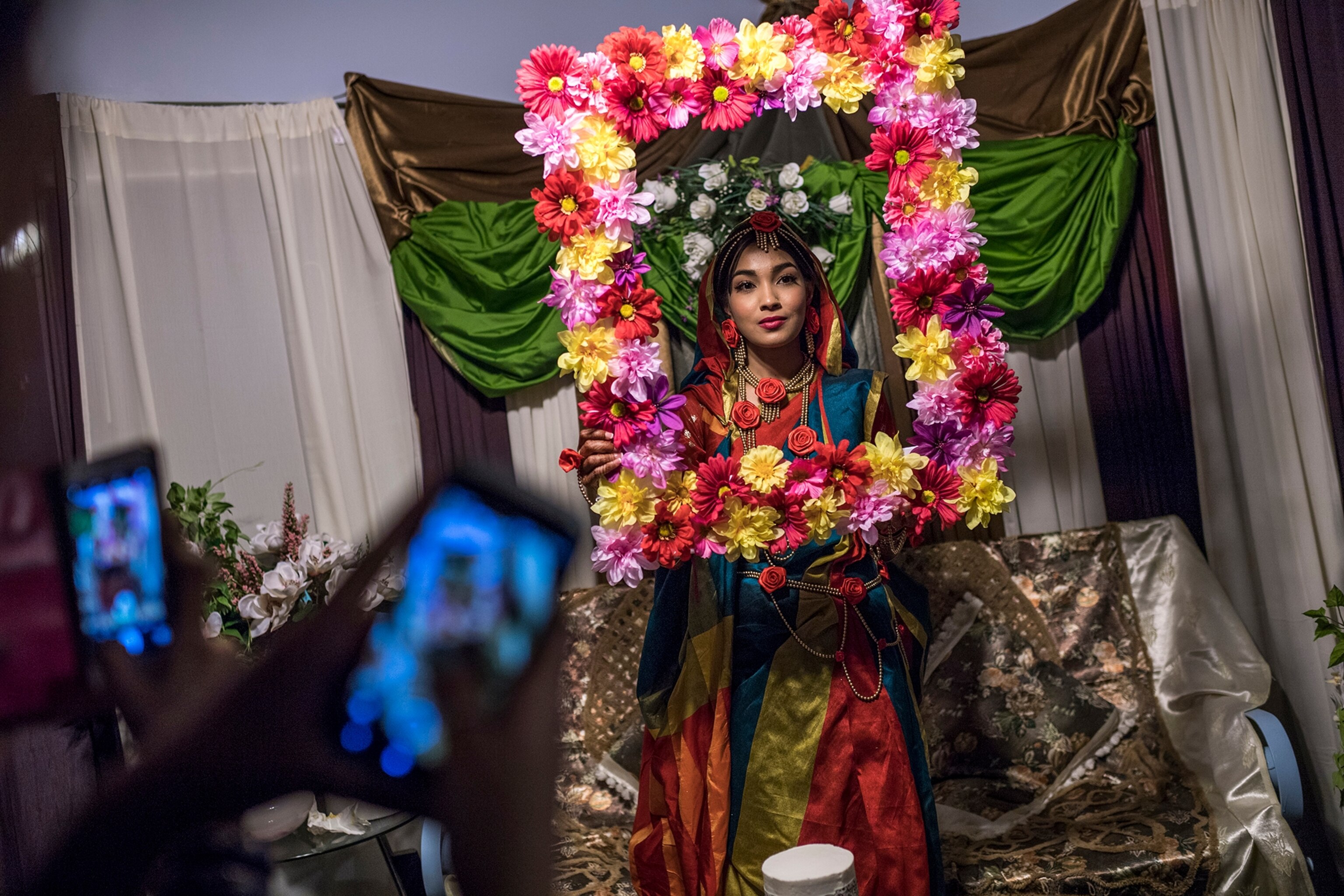
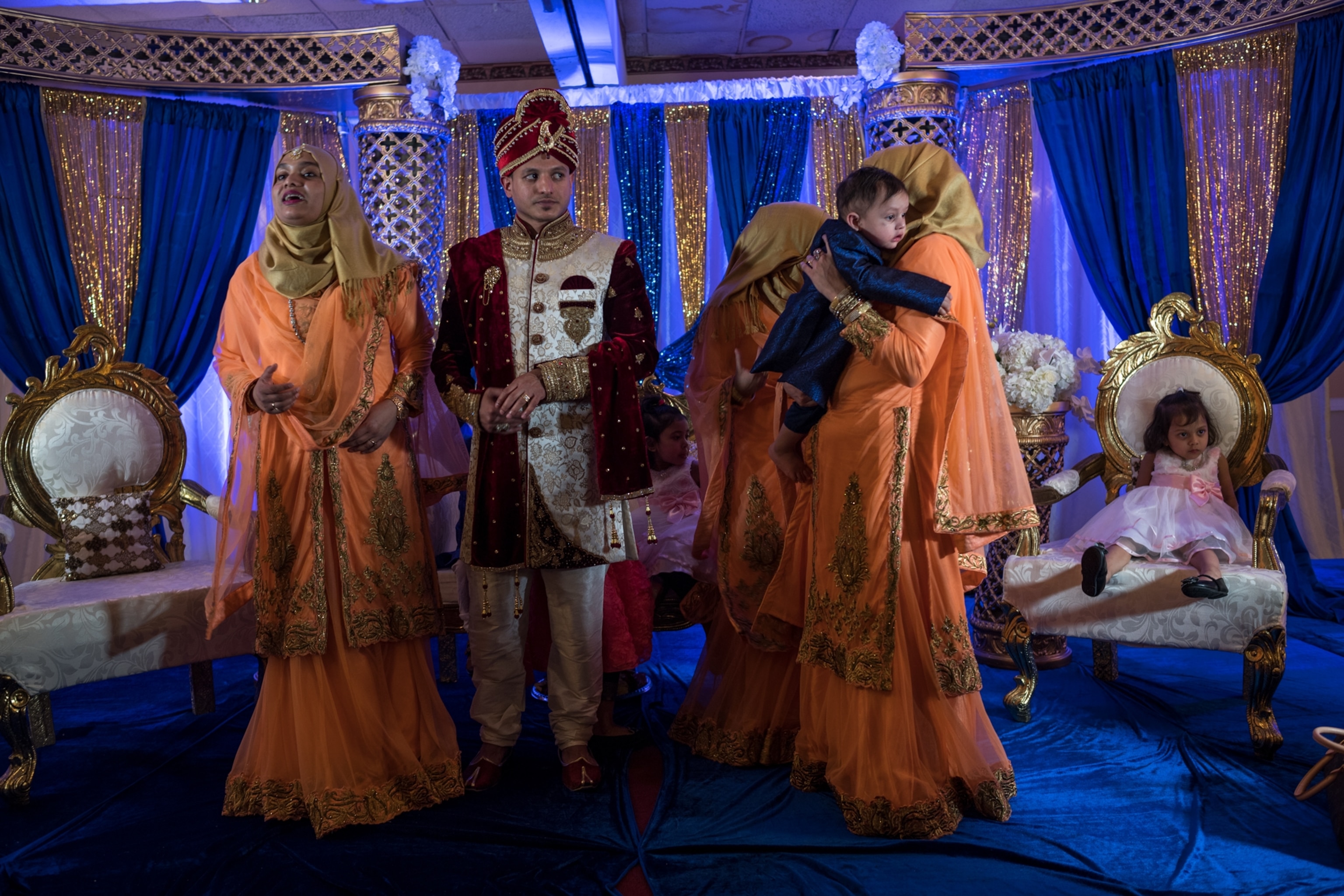
Islam has long been part of the tapestry of American identity; the first Muslims were brought here as slaves in the 16th century, many from West Africa. In the New World, 10 to 20 percent of slaves were Muslim, according to scholars. Barred from practicing their faith, they did it in secret, so clandestinely that scholars say Islam largely died out among the families that brought it here.
But elements of Islam were resurrected in African-American communities through black nationalist and civil rights movements as a tool of empowerment, seen as reclaiming a culture stripped from a people. It started with movements such as the Nation of Islam. But today the majority practices a more mainstream form of the faith, following the lead of Malcolm X and later Imam Warith Deen Mohammed. The son of Elijah Muhammad, the prominent Nation of Islam leader, Mohammed abandoned a black separatist narrative and is credited with bringing a more traditional practice to Black Muslims.
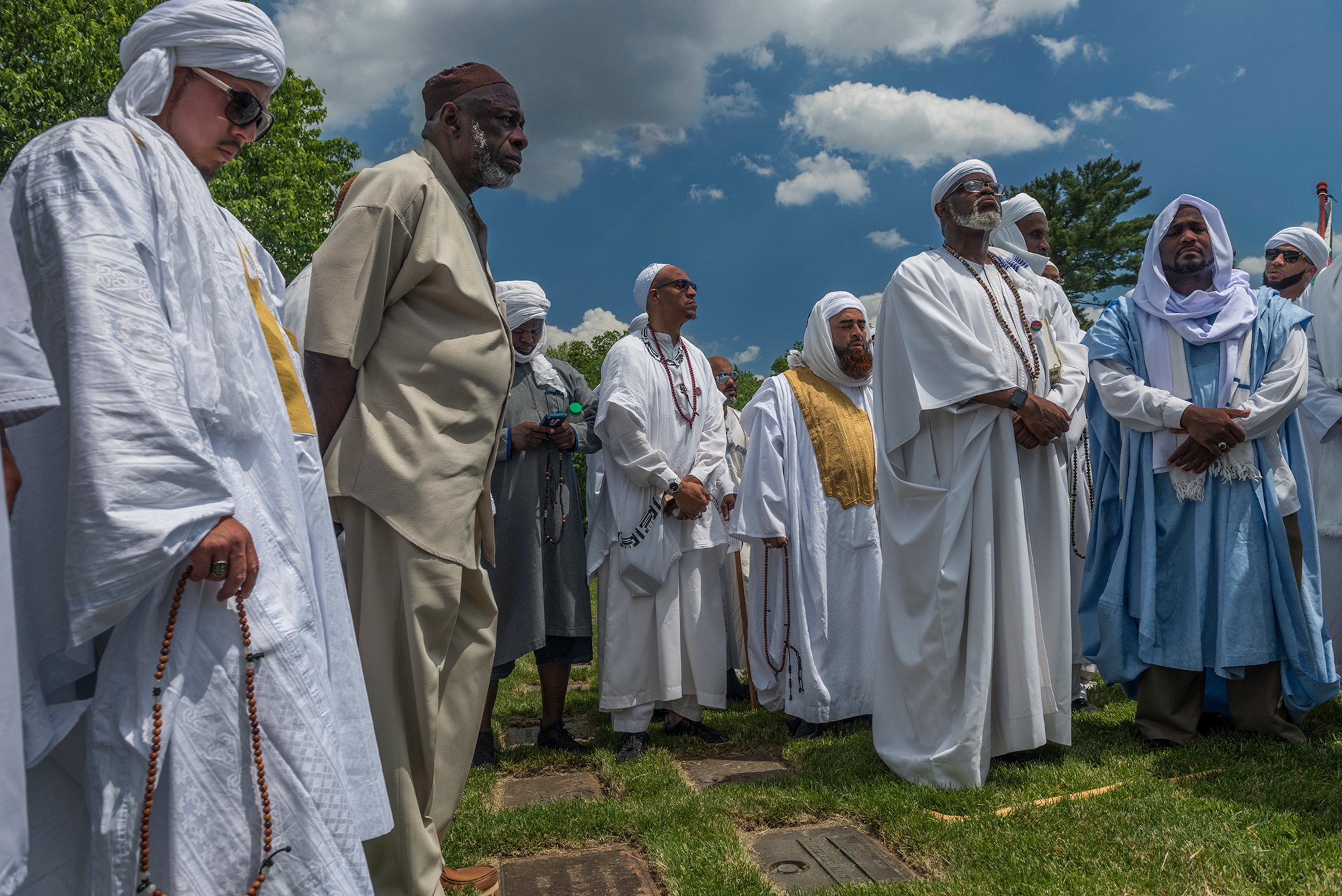
The first wave of Muslim immigrants in modern history began in the late 1800s; mostly from the Levant, they sought economic opportunities and settled largely in the Midwest. The first mosque was in North Dakota. Iowa is home to the oldest surviving place of worship built for Muslims, the Mother Mosque of America. But the door all but closed for Muslims in 1924, with an immigration act that barred people from Asia. In 1965 the next wave began, when new legislation reopened the U.S. to the world. That immigration continues today. The largest Muslim immigrant group hails from South Asia. There are now more than 2,100 mosques across the country.
But for some, having a mosque of their own is still elusive, like the Muslim families in rural Santa Clara County, south of San Jose, California.
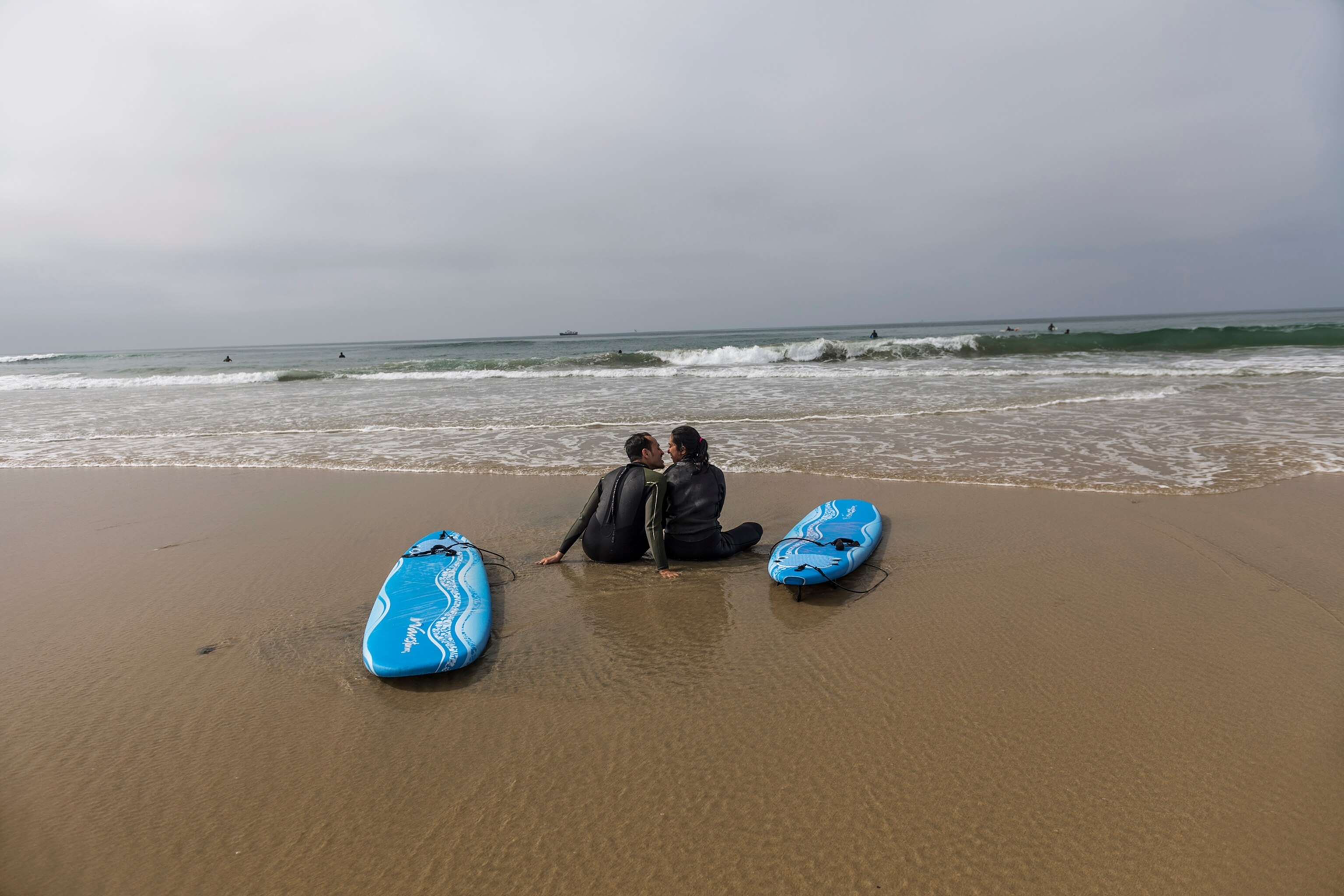
The area is a beautiful landscape of rolling hills and sheep farms. But the barn on Mohammed Idris Hussain’s farm in San Martin—where the retired Fijian-American Vietnam War veteran has lived with his family since the 1980s—is no longer for his sheep. It’s where the ethnically mixed South Valley Islamic Community prays.
It was supposed to be a temporary fix, to save the $1,500 a month in rent for a storefront in a strip mall. The community pooled its money, bought a piece of land, and drew up plans for the Cordoba Center. But the project quickly became a lightning rod. More than a decade after those first steps, the community now numbers about a hundred families, and they still squeeze into Hussain’s barn to worship.
The Many Faces of Islam
The community has spent about three million dollars trying to build this mosque, but the Islamic center is still just a blueprint in Sohail Akhter’s kitchen. The Pakistani American is the project manager. “Fearmongering is the greatest weapon that they’ve used against us because we’re so few,” he explains to me, saying that opponents have accused them of trying to build a terrorist training camp. “Not a lot of people here have ever met a Muslim. They associate all of us with that. They’re afraid.”
The main opponents are the Gilroy-Morgan Hill Patriots and the People’s Coalition for Government Accountability. The Patriots have posted anti-Muslim rhetoric on Facebook and sponsored an anti-Muslim speaker at the library and the town’s Lions Club to talk about his view that Islam is a threat to America.
The president of the Patriots says its opposition was never about Islam but about the environment. “The bottom line is these people came and bullied themselves into the neighborhood,” says Georgine Scott-Codiga. “All the traffic, all the cars, the noise. We want to protect that land.” But, she adds, she can understand people who worry that Muslims will change “the way of life.”
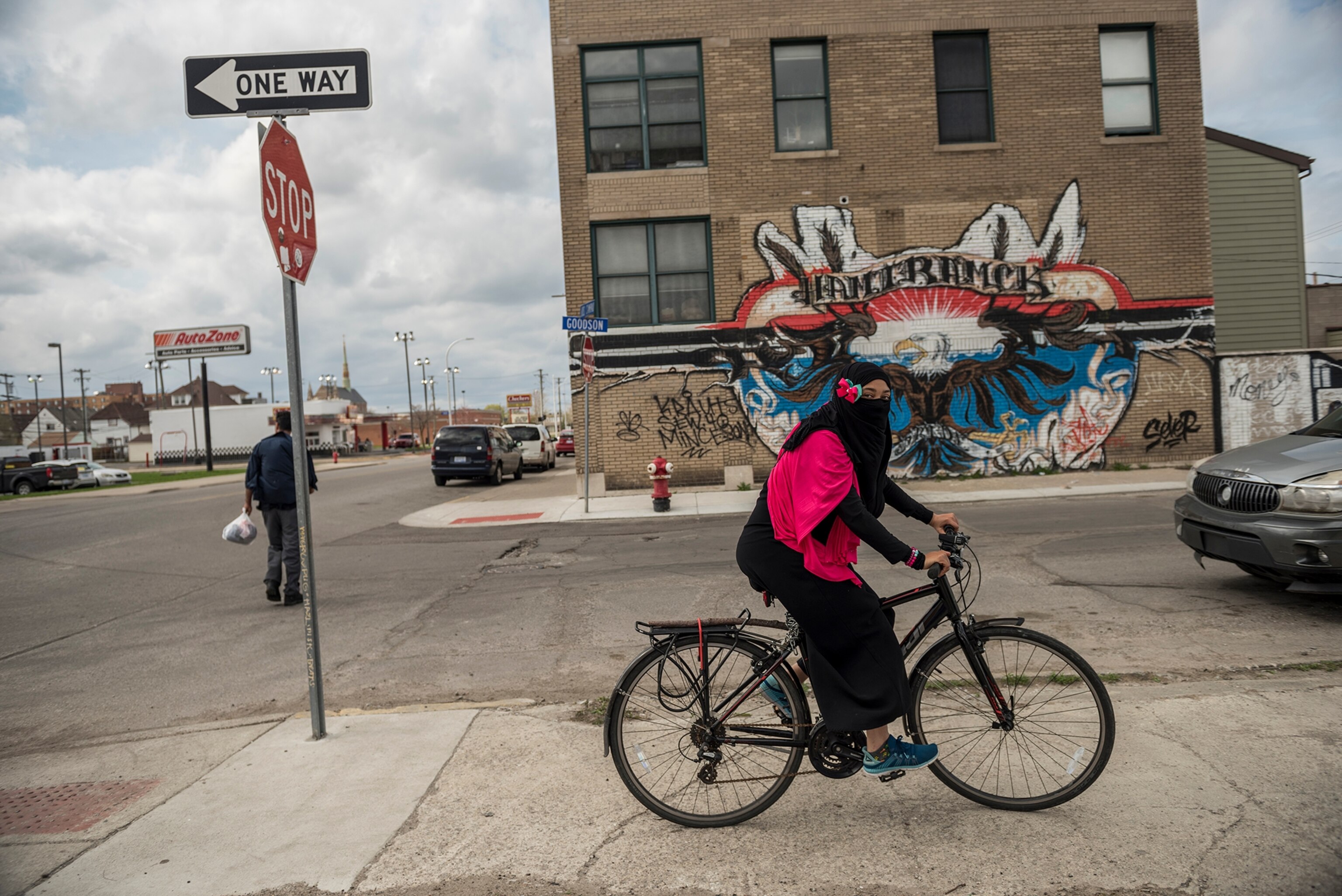
Civil rights advocates say using environmental concerns is a tactic commonly employed by anti-Muslim groups to block mosques or Muslim cemeteries. Similar arguments have been used to block, or try to block, projects in Georgia, Massachusetts, Minnesota, Tennessee, and Texas.
In the first land-use meeting before the county planning commission in 2012, Akhter and others in the Muslim community were shouted down and told to go back to their countries.
“I’ve been here since 1990, and that was the first time I really felt scared,” Akhter says. “I grew up in Fort Wayne, Indiana, once a hotbed of KKK activity, and never saw this kind of stuff until post-9/11.”
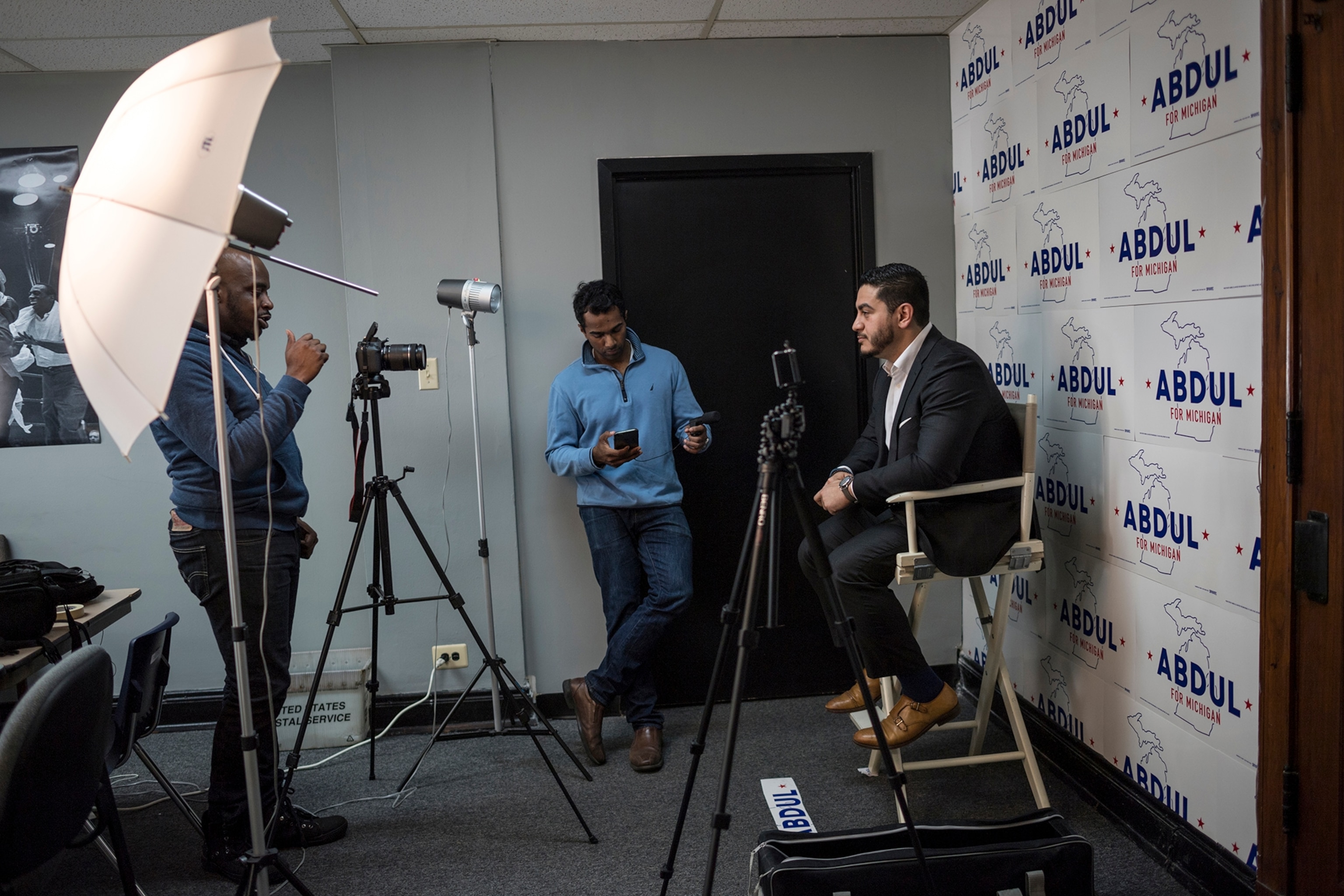
The fight over the mosque and the demonization of Muslims have had an effect on Akhter’s now grown American children. He’s watched as they have distanced themselves from the faith after being bullied at school and called terrorists. Nudrat, Akhter’s wife, a real estate agent, is afraid to show homes on her own now. “There are times I don’t feel safe; sometimes I go with him,” she says, pointing to her husband.
She’s worried people might react badly to her head scarf. There have been incidents that shocked her. “Once I was at the local Costco, and this lady came to me and handed me a small booklet and said, ‘You might enjoy reading this,’ ” she says. “I didn’t realize what it was, and when I opened it up, it was a whole Muslim comic book saying, ‘Oh, we’re going to kill everybody.’ It was all stuff making fun of Muslims, and I didn’t know what to do. It was so sudden.”

The contempt has been upsetting, Akhter says, but it’s also made Muslims here more resolute in defending their faith and their rights. “This is our home,” Akhter says. “Somebody comes and tells you to leave your home—are you going to quit? That’s the most absurd thought.”
Despite the troubles, Bakri Musa, a Malaysian-American surgeon in the community, says he prefers a lawsuit to the alternative. “I’d rather they sue us than they burn the mosque down. This is a quantifiable obstacle,” he says.
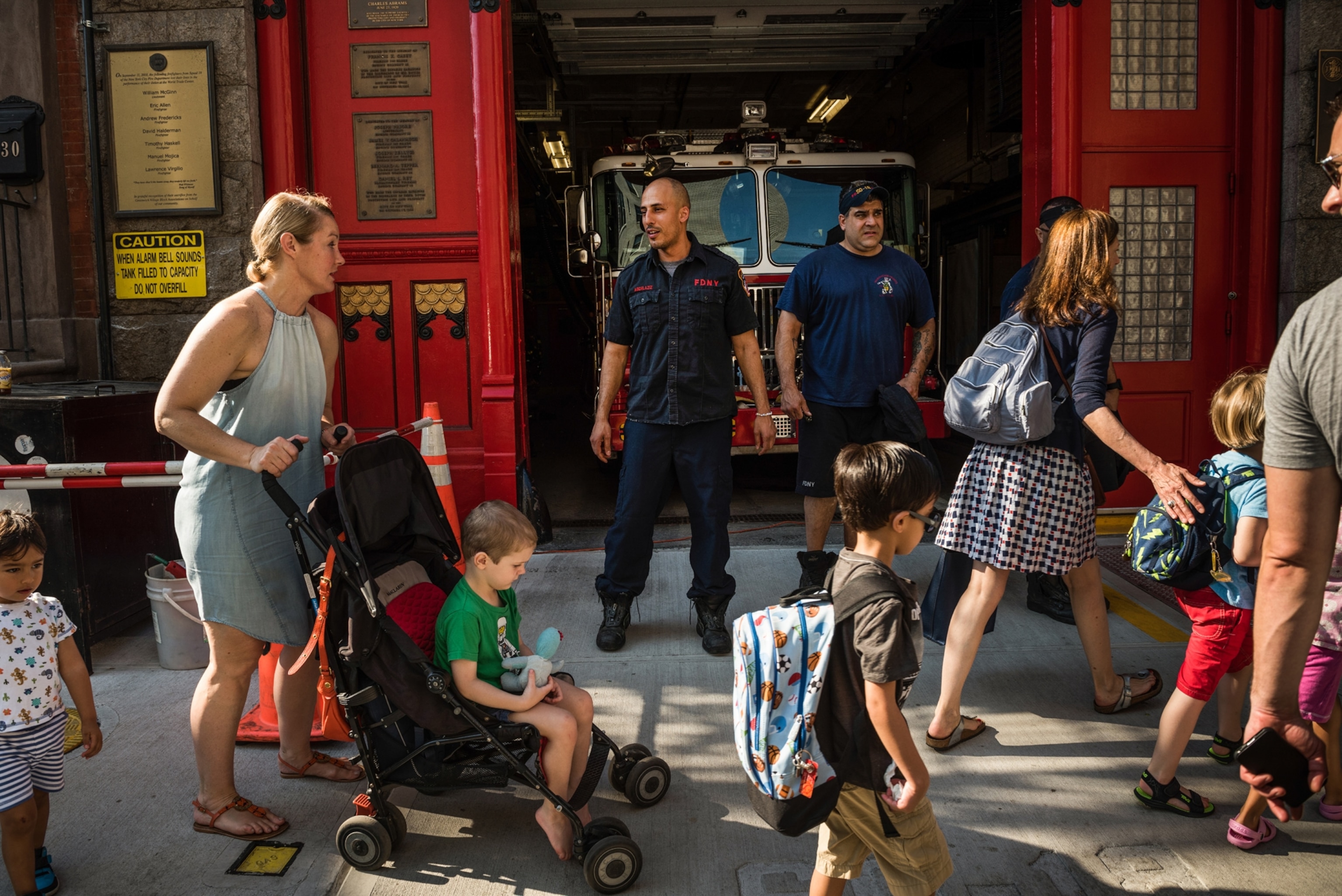
That’s what Musa loves about being Muslim in America: The rights of expression and worship are protected. Here, he says, he can choose to be the kind of person, the kind of American, the kind of Muslim he wants to be. He points to his shelves at his rustic home on a sheep farm. They’re filled with books written by Shiite and Sunni scholars, reflecting the many schools of thought under those two main Islamic sects.
“This is the place to be a Muslim, scholarship without intervention,” he says. “In Malaysia I could go to jail because I have Shiite literature in my house, and in Malaysia that’s the equivalent of being a commie in America.”
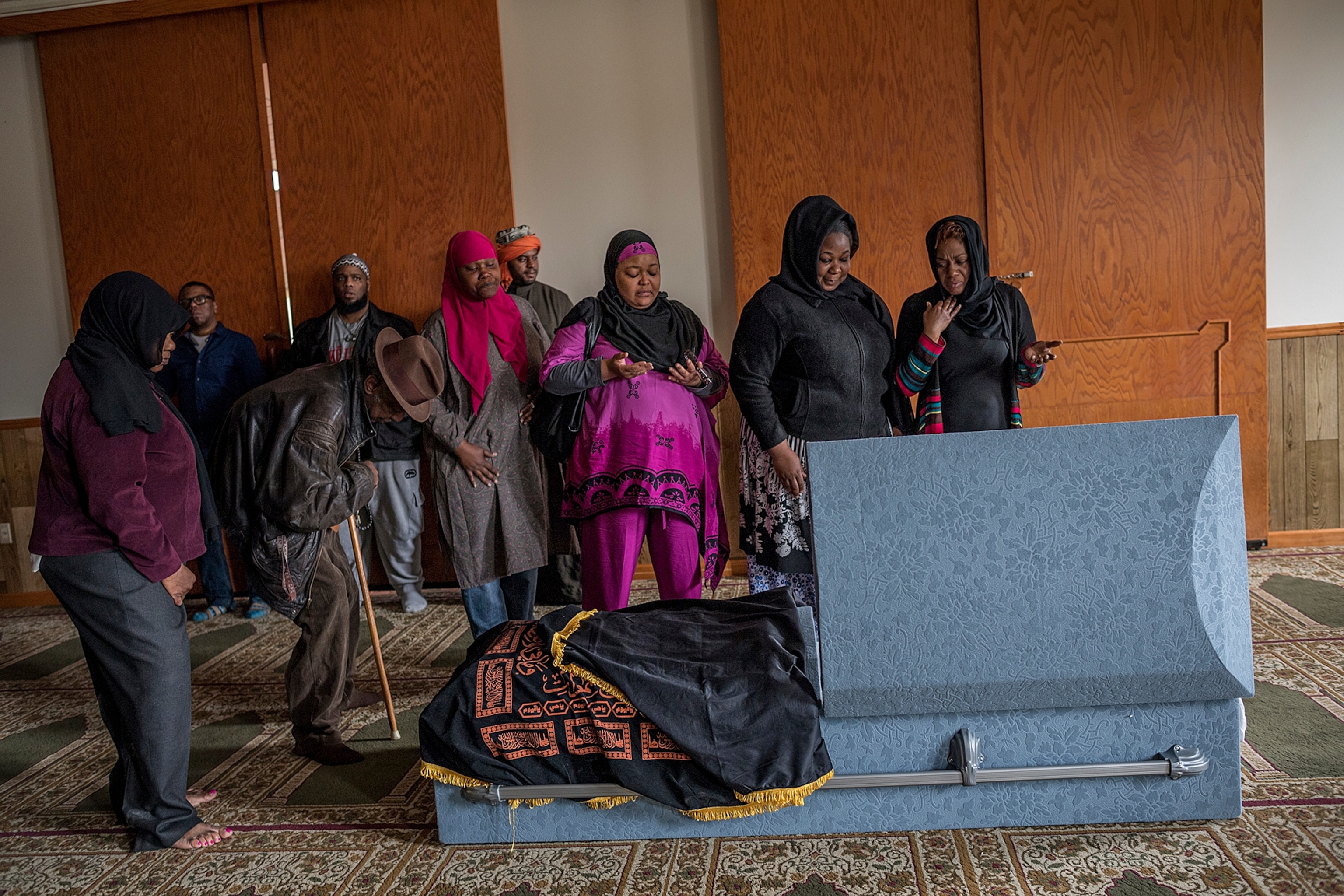
The day after we talked, the mosque rents out the community center to host an interfaith dinner with Jewish and Christian leaders, as well as guests. Musa and his wife, Karen, a Canadian American, sit next to a Jewish couple and explain the different South Asian foods being served. It’s something the community does a lot now—interfaith work, community outreach. Despite how loud their opponents are, they say they feel welcome in the community and are hopeful they’ll soon have a mosque of their own.
Many young Muslim Americans are tired of constantly having to explain themselves or speak for all Muslims. They’re searching for a place to belong that combines their faith and American sensibilities.
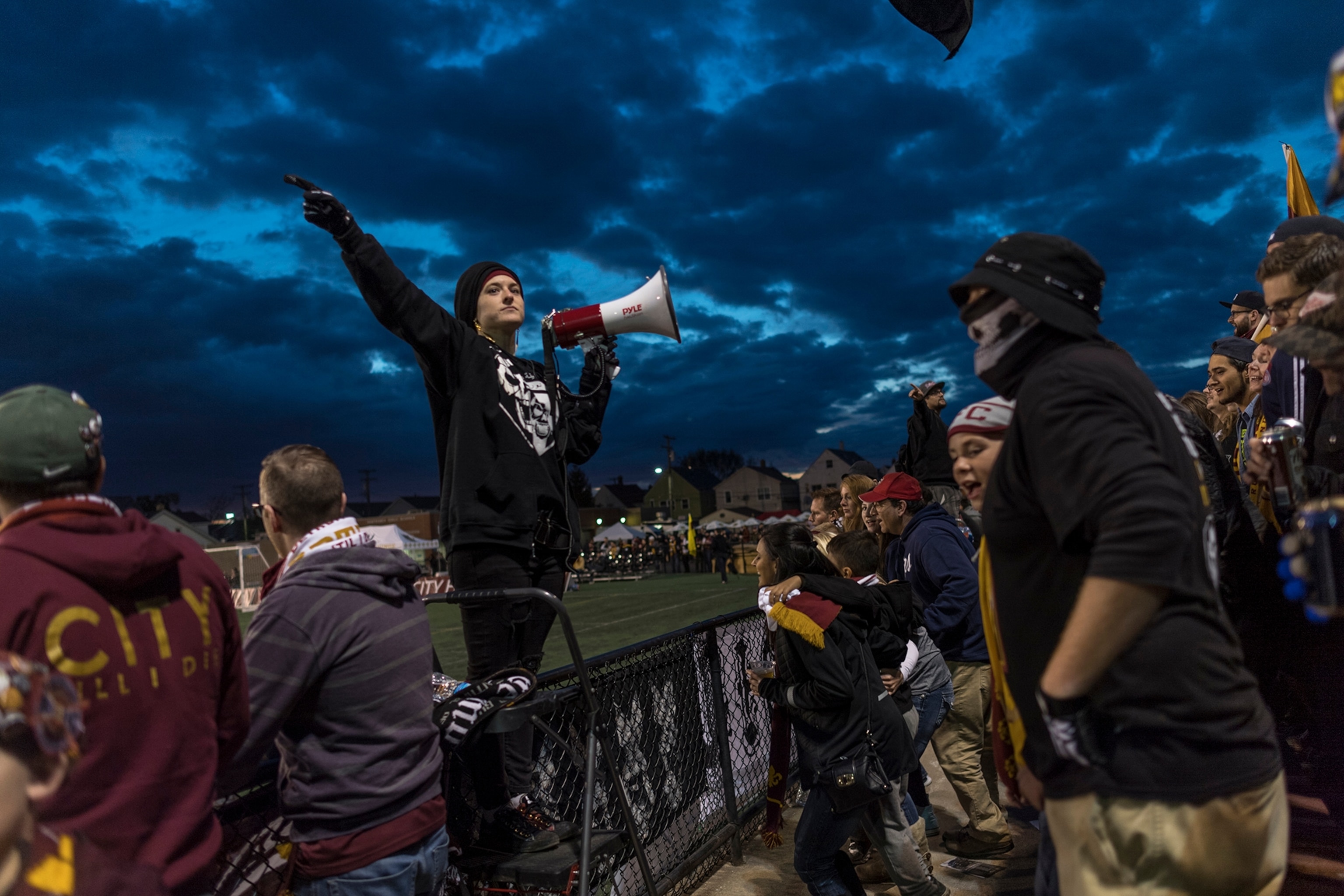
I meet Rami Nashashibi on West 63rd Street on the South Side of Chicago, where his Inner-City Muslim Action Network (IMAN) has operated for two decades. He stops traffic as he runs from the clinic and offices on one side of the street to the Mexican restaurant turned prayer room, cafeteria, and extra office space on the other.
The 46-year-old community activist founded this place to use Islam to serve the underserved. Now he’s built a coalition of Muslims—black, South Asian, Arab, white, Latino, some from the impoverished South Side, others from suburban communities—to use the faith to tackle the social issues that plague this neighborhood.
Nashashibi was born to nonreligious Arab parents and found his way to the faith, like many American converts, through hip-hop and the social justice movement. When speaking about IMAN, Nashashibi often quotes Imam Warith Deen Mohammed, a cleric he considers an inspiration who died in 2008. “He best reflects the tradition of Islam that resonates with me now,” he says. “The life-giving message of Islam. Islam as a source of mercy, a source of reconciliation.”
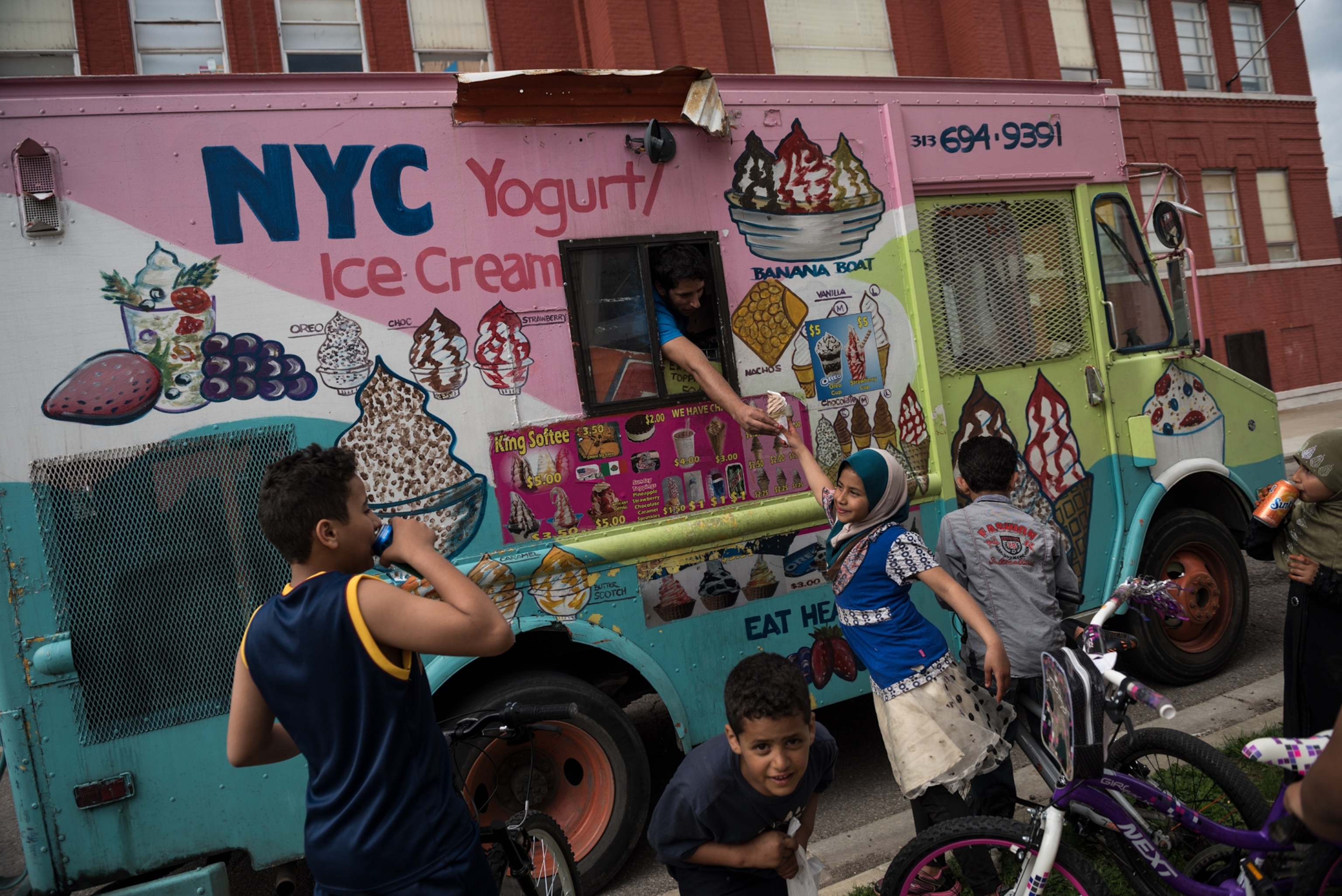
Today Nashashibi and the staff at IMAN work with corner-store owners to bring fresh food and a more inviting environment—things like no bars on the windows—to food deserts in low-income neighborhoods. They get residents involved in community organizing, provide free medical services, and run a reentry program for former inmates who leave prison with a few dollars and often no family support.
I visit during Ramadan, the busiest time of year at IMAN. To break this day’s fast, a community dinner is served in the parking lot behind the clinic. Vendors hawk cold-pressed juices, bean pies, and colorful jewelry. The guests are from the neighborhood: community organizers, politicians, faith leaders, and friends. In the background the graffiti mural on IMAN’s building has a verse from the Quran. “Is there any reward for good other than good?”
Nashashibi addresses the crowd. “Whether we’re delivering health care or building houses, we understand that you have to do it by building power, building relationships, building alliances,” he says. “You will continue to see us—as we have, ever since this election—use the hashtag ‘Fight Fear, Build Power’ as the ultimate response to the moment that we’re in.”
“I want to hear it,” he tells the crowd. “Fight fear!” he calls. The crowd shouts, “Build power!”
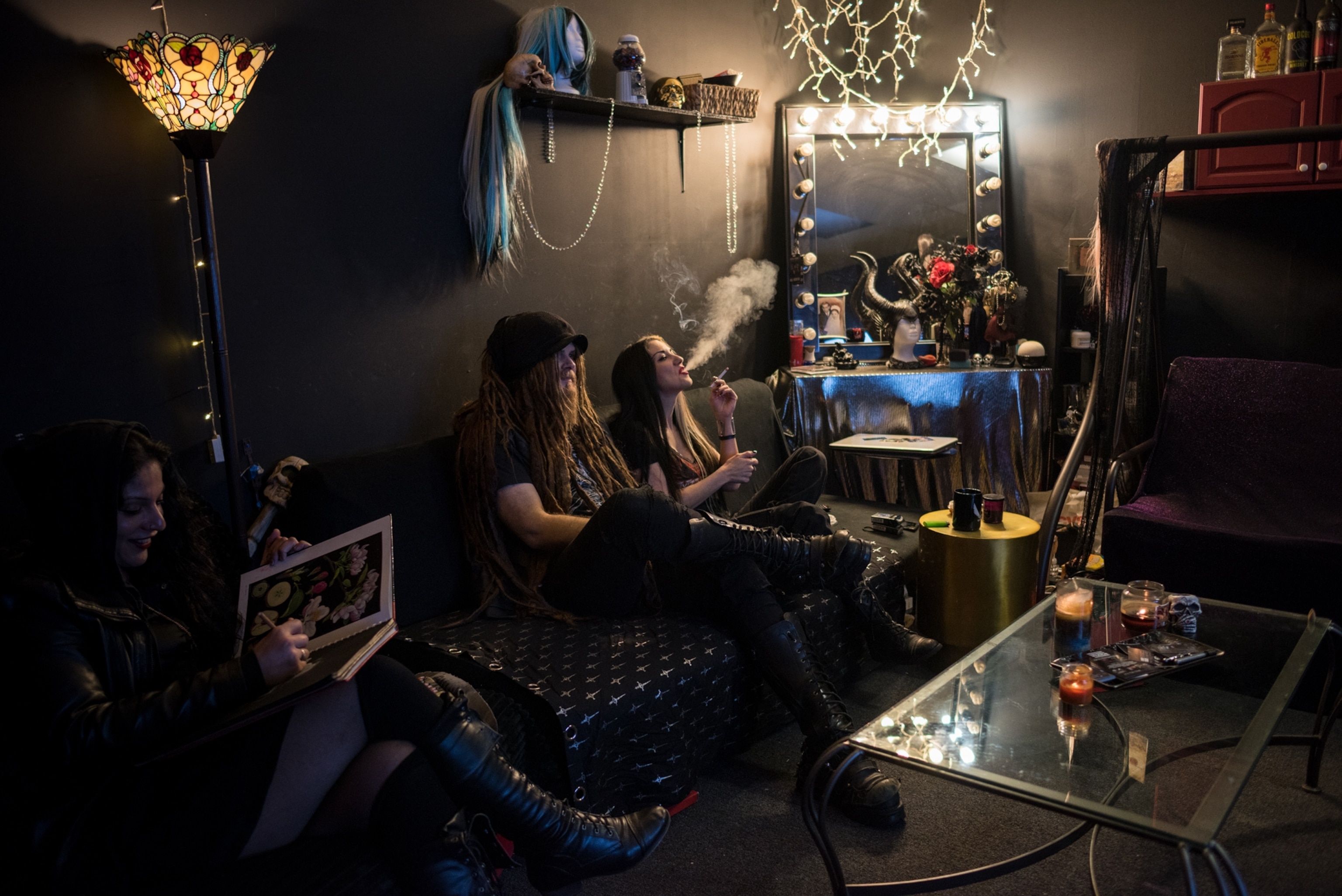
The next day a group from IMAN heads to a corner store, Morgan Mini Mart, for an event called Refresh the ’Hood. Outside an emcee tweaks the words to a Tupac song, rapping, “The sweeter the juice, the deeper the roots.” To passersby, volunteers hand out fresh smoothies and mango salsa made from produce sold inside.
Sadia Nawab, the 28-year-old arts-and-culture manager for IMAN, sits on the ground outside the store with a pair of teens painting trash cans to beautify the place. Her hair is covered in a stylish multicolored head wrap knotted at the top, her nose pierced.
Nawab grew up culturally confused. She’s the daughter of parents from Pakistan, she was raised in a largely Arab immigrant suburb of Chicago, and she went to a mostly white school but identified with various cultures, including black culture and hip-hop. “I knew I was Muslim,” she says. “I just didn’t know what it meant. And people put you in boxes: Arab, Muslim, immigrant, doesn’t speak English. I didn’t know how I fit in.”
Through IMAN she began to figure out what being Muslim meant to her. She found her way back to her faith. “It had this transformative effect on me, working in the trenches of the South Side of Chicago,” she says. “I was able to thrive, emotionally and mentally. I was 17 when I started volunteering, and that’s a precious age.” She says she needed mentors who understood her as an American Muslim teen. That’s what she found at IMAN. “Here I don’t always feel like an outsider. It feels natural,” she says.
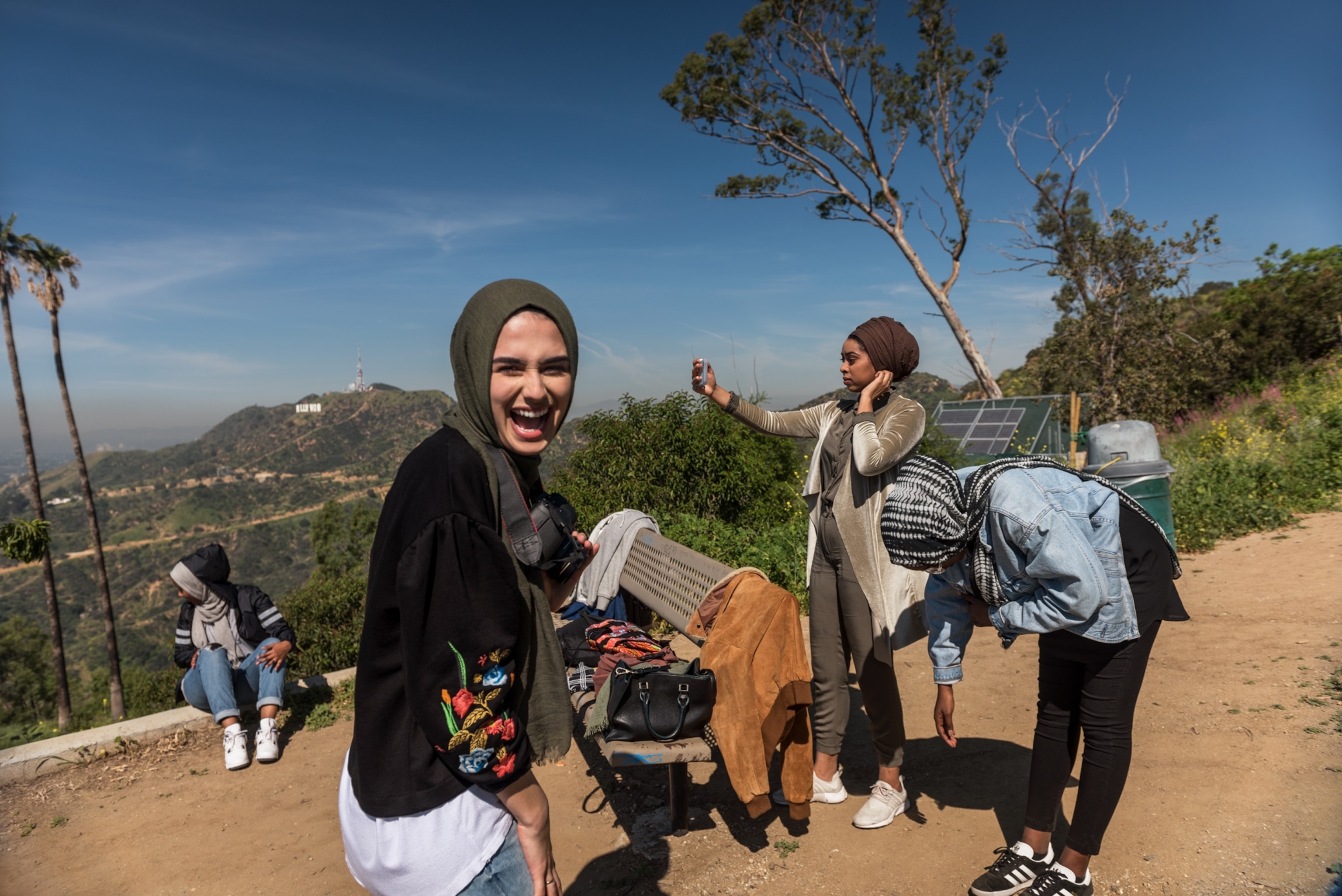
IMAN is a way to make Islam relevant to American Muslims, Nashashibi says, especially those searching for a purpose and a connection to a faith so often portrayed as a foreign threat on American television. For this work he was recognized last year with a prestigious MacArthur Foundation “genius” award. “We’re trying to celebrate the legacy of the spirit of a transformational, empowering, inspirational Islam that is not constantly trying to apologize and explain itself,” he says.
It’s the antidote, he says, to the apathy that leads people away from the faith or the vulnerability, disenfranchisement, and anger that lead people to violence, be it on the South Side of Chicago or the battlefields in Syria and Iraq. And America, he says, is the best place to be a Muslim today. “America has always provided, even in its darkest hours, spaces through which people have challenged it to live up to unfulfilled ideals.”

